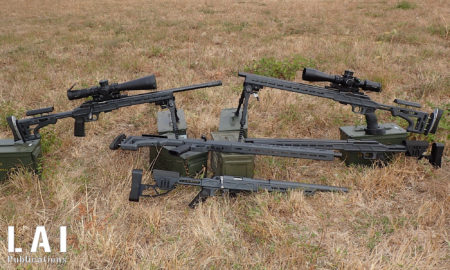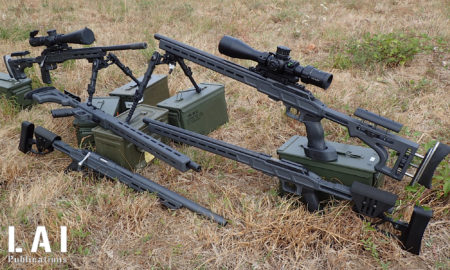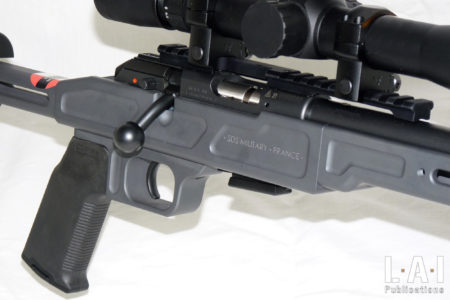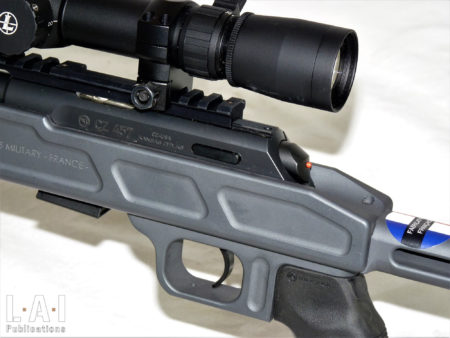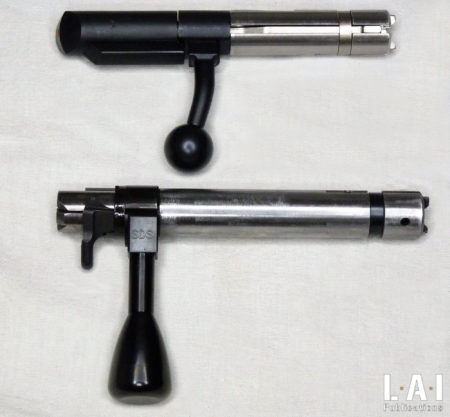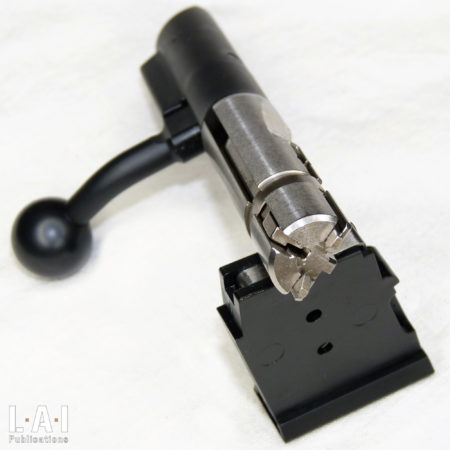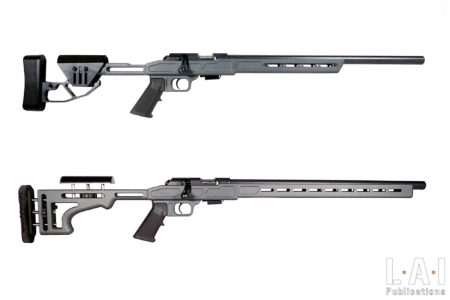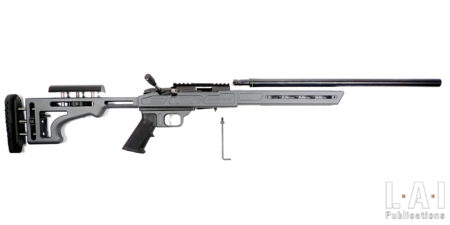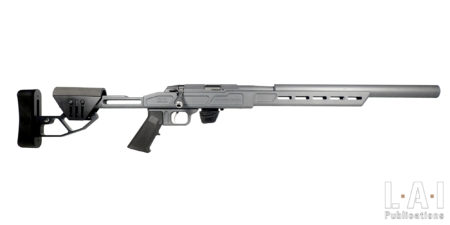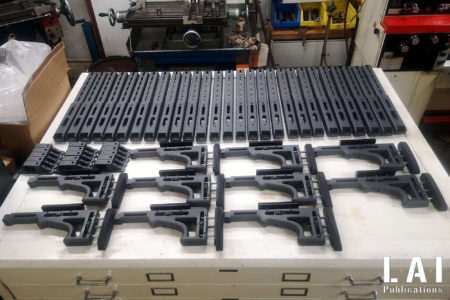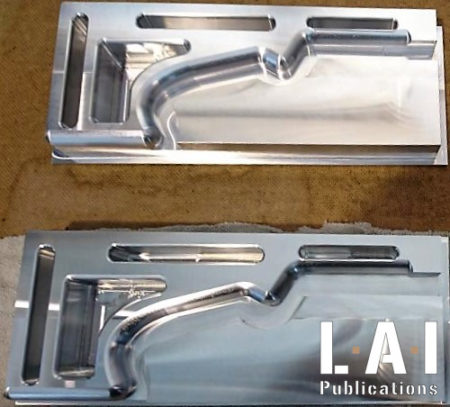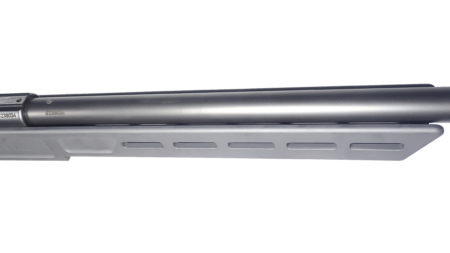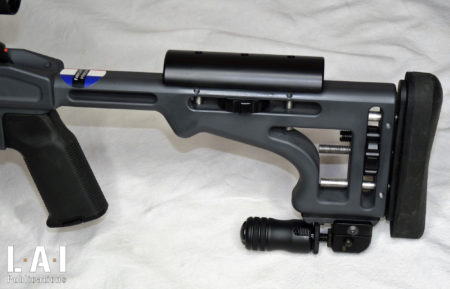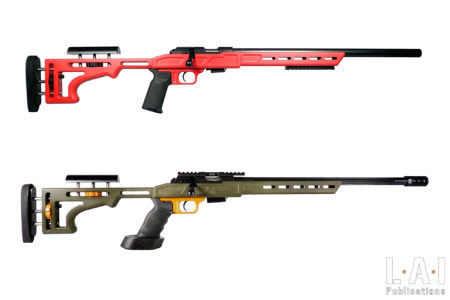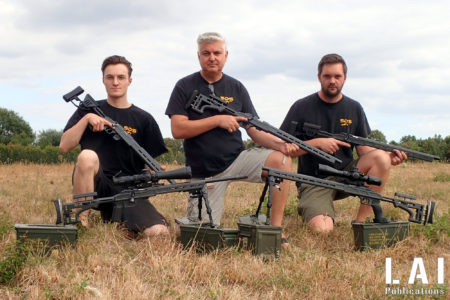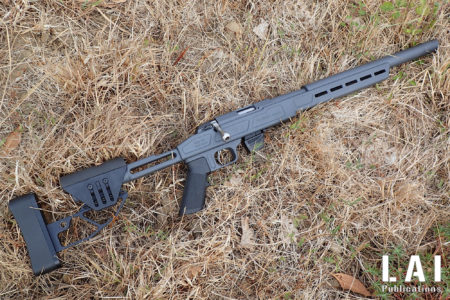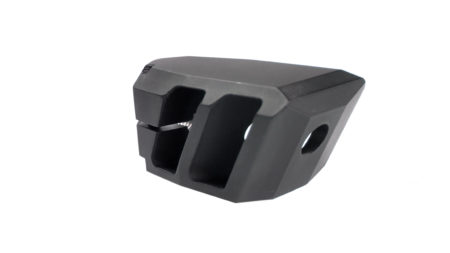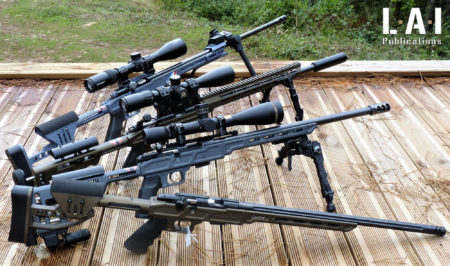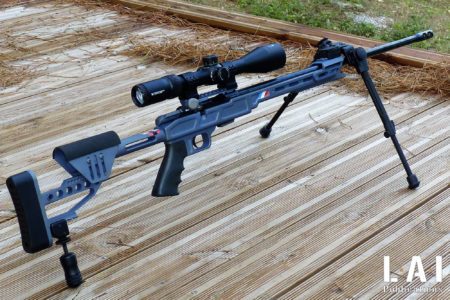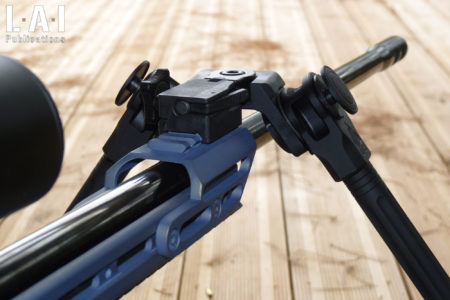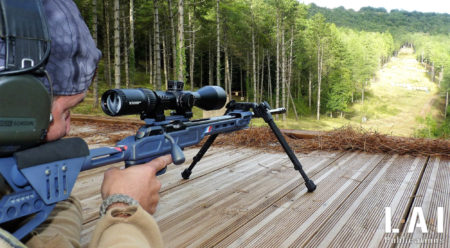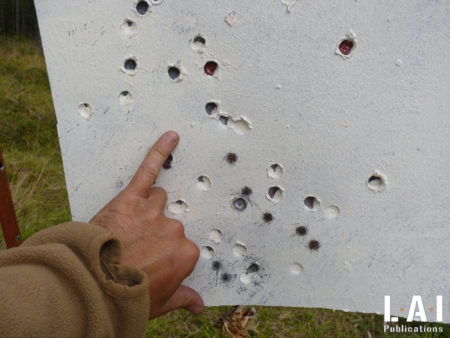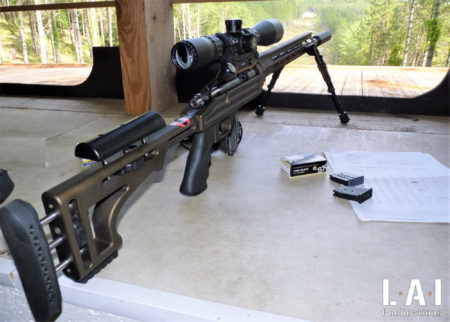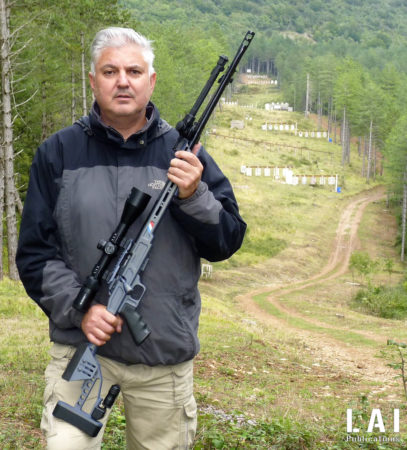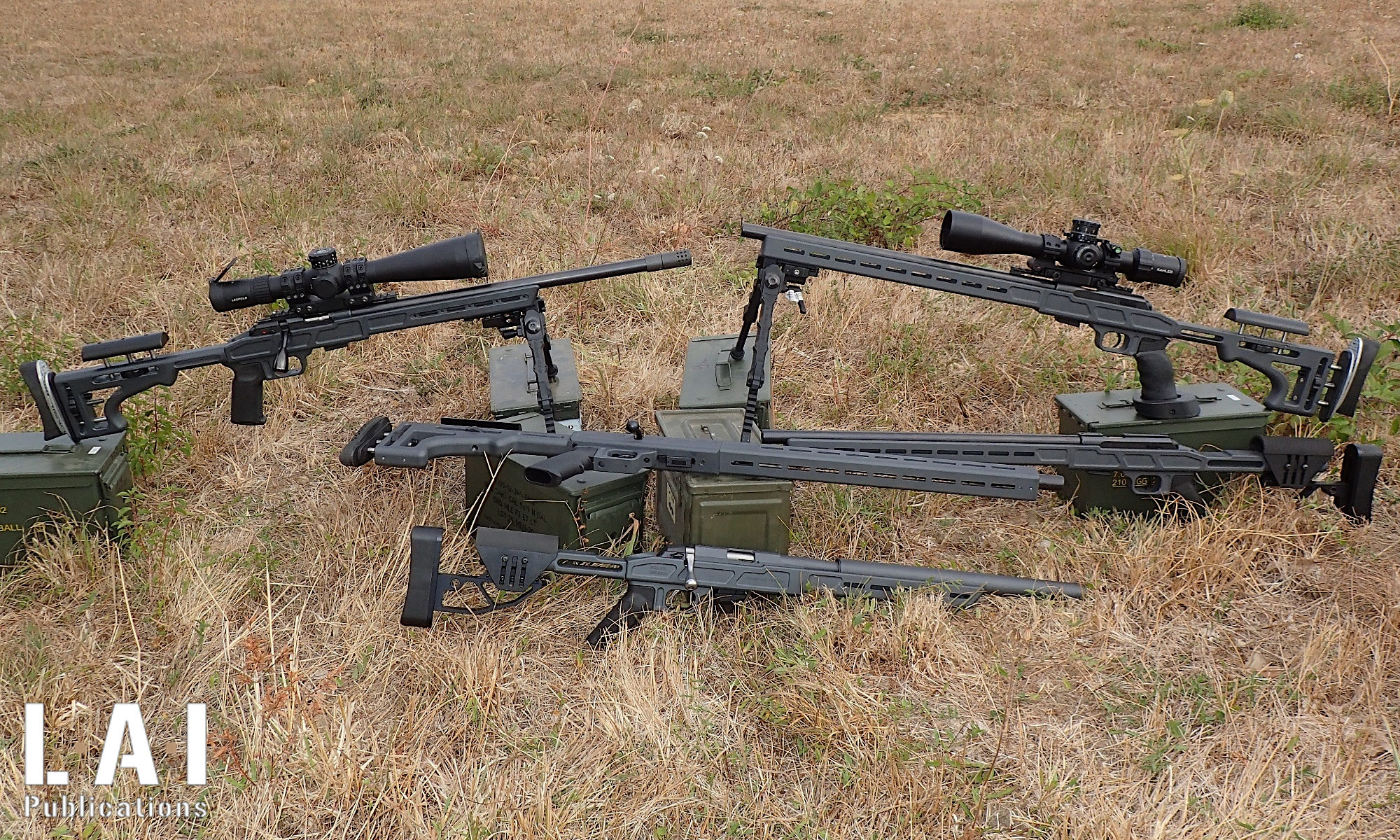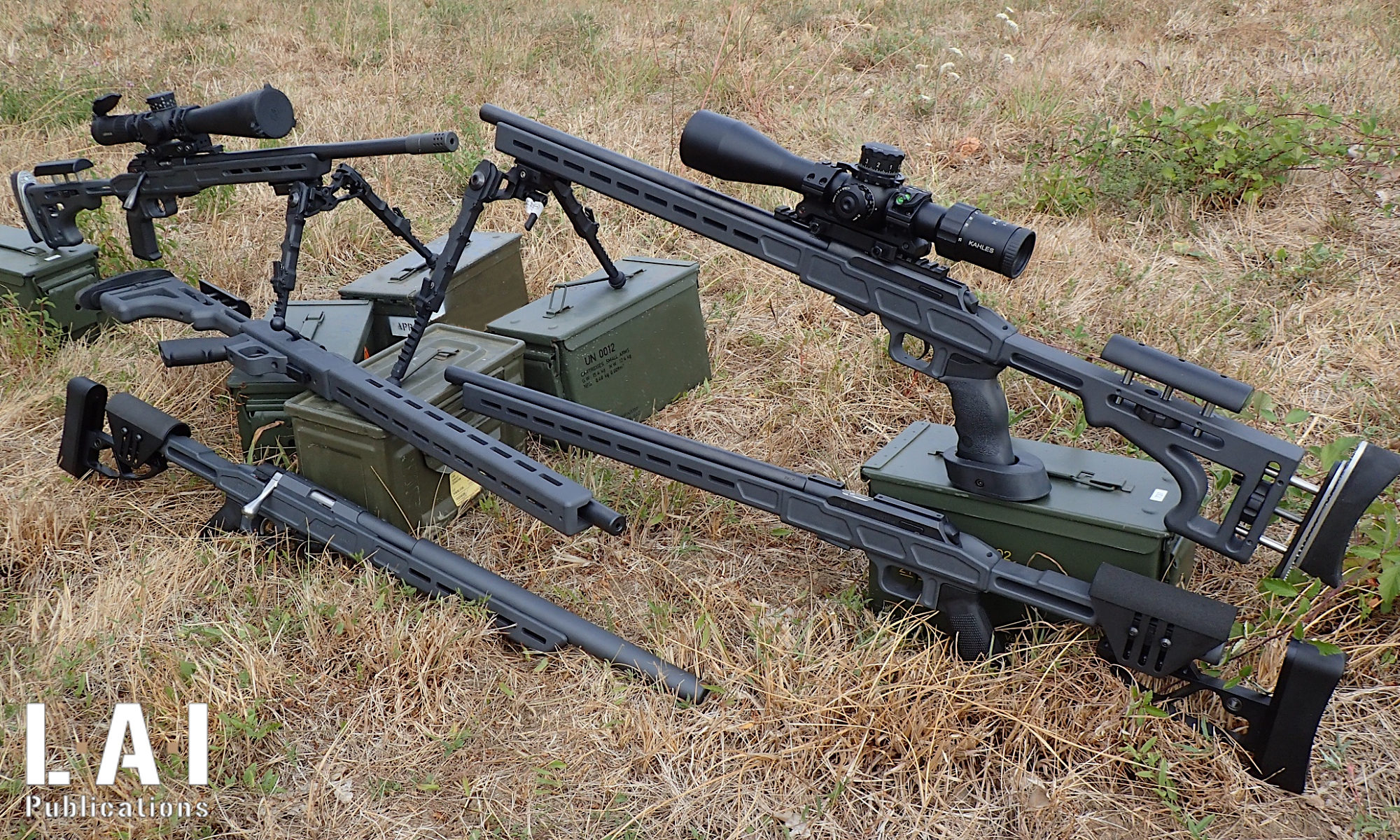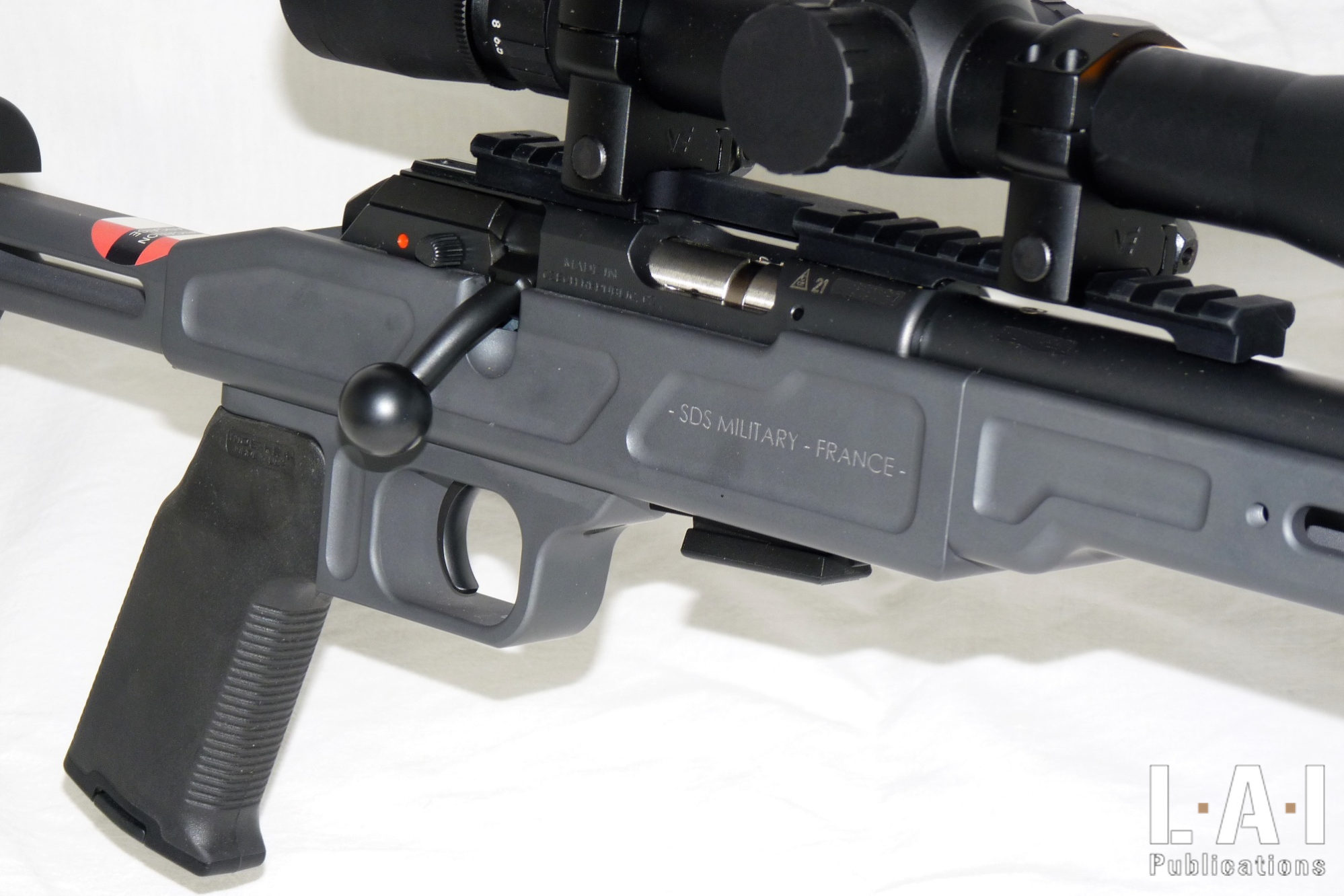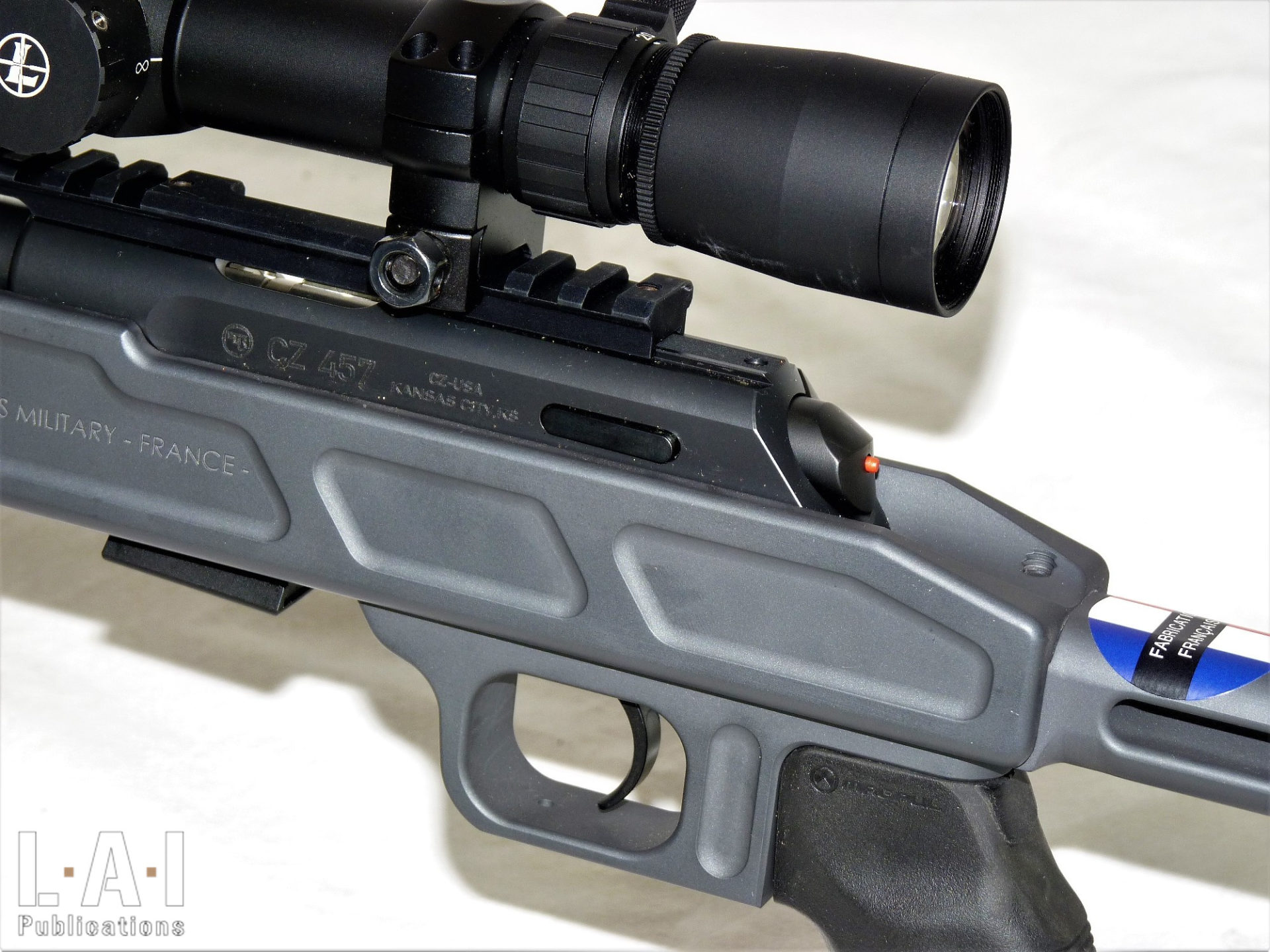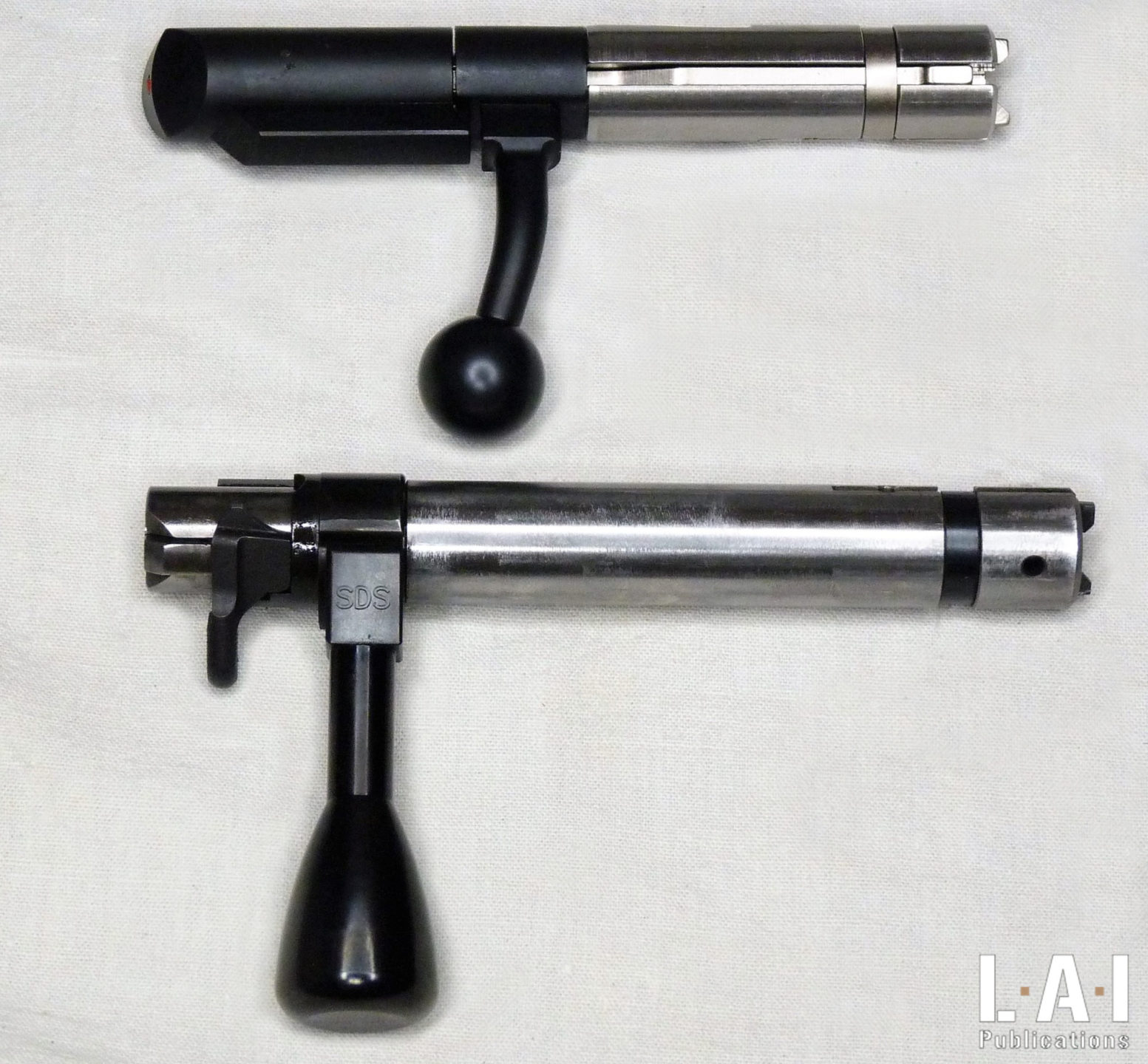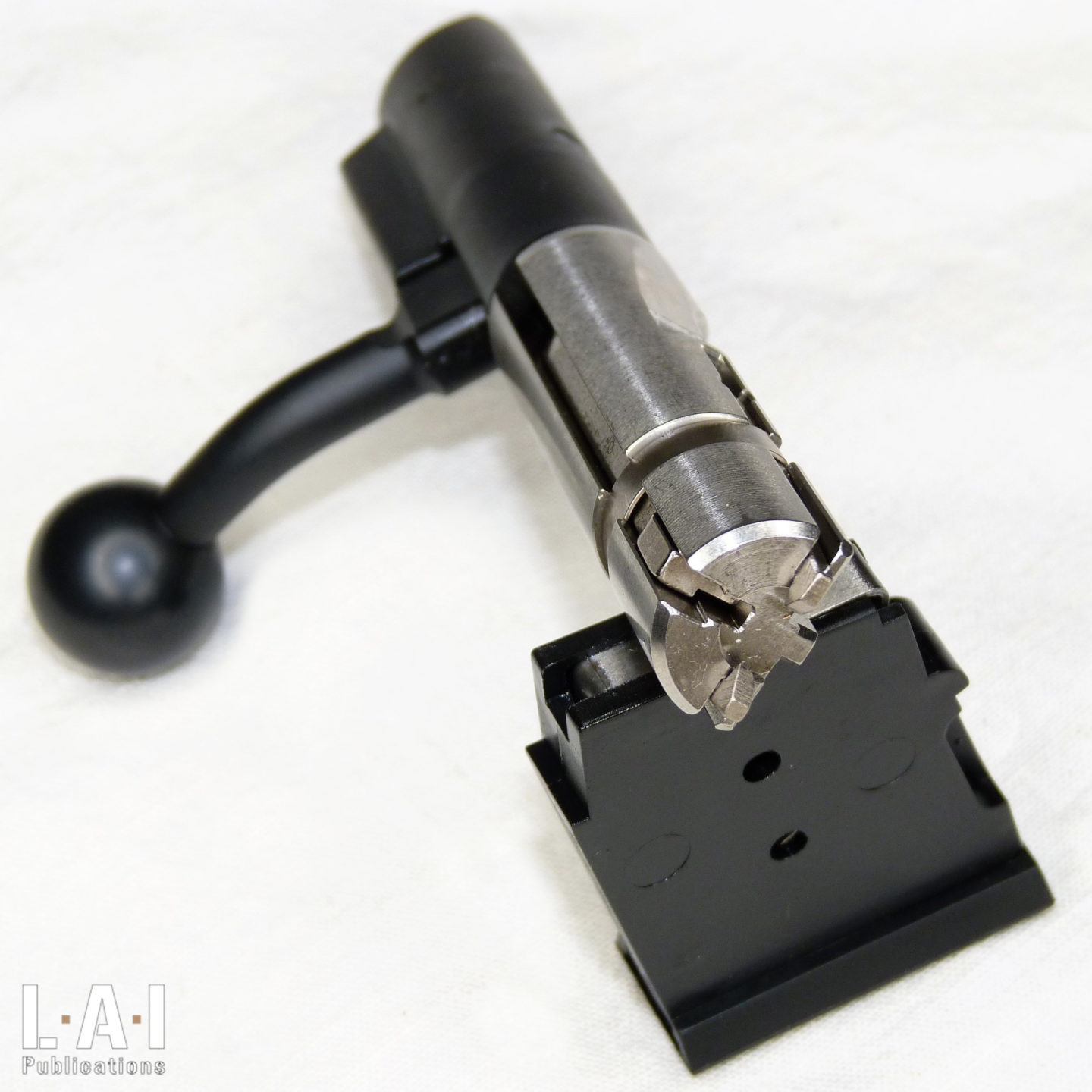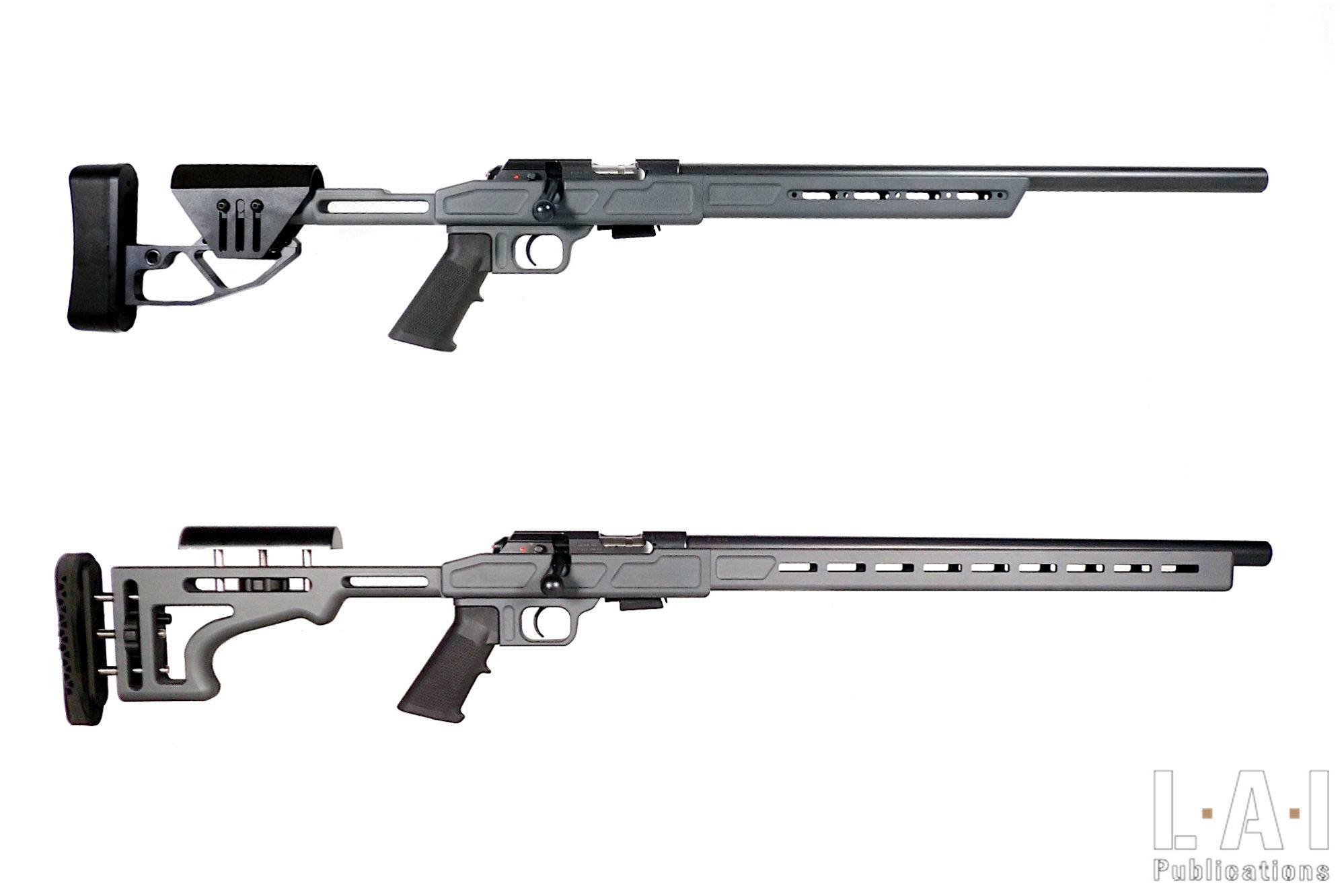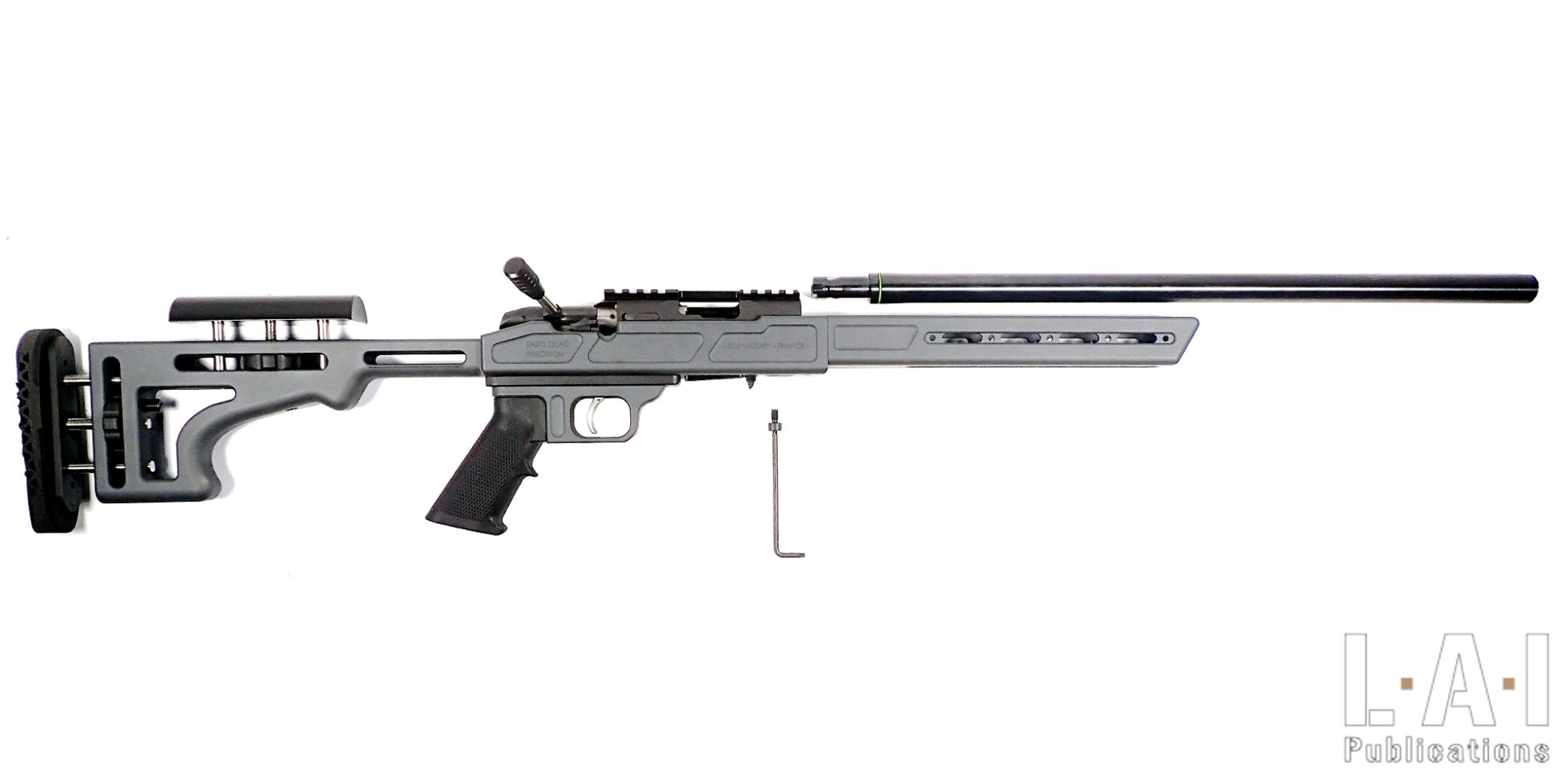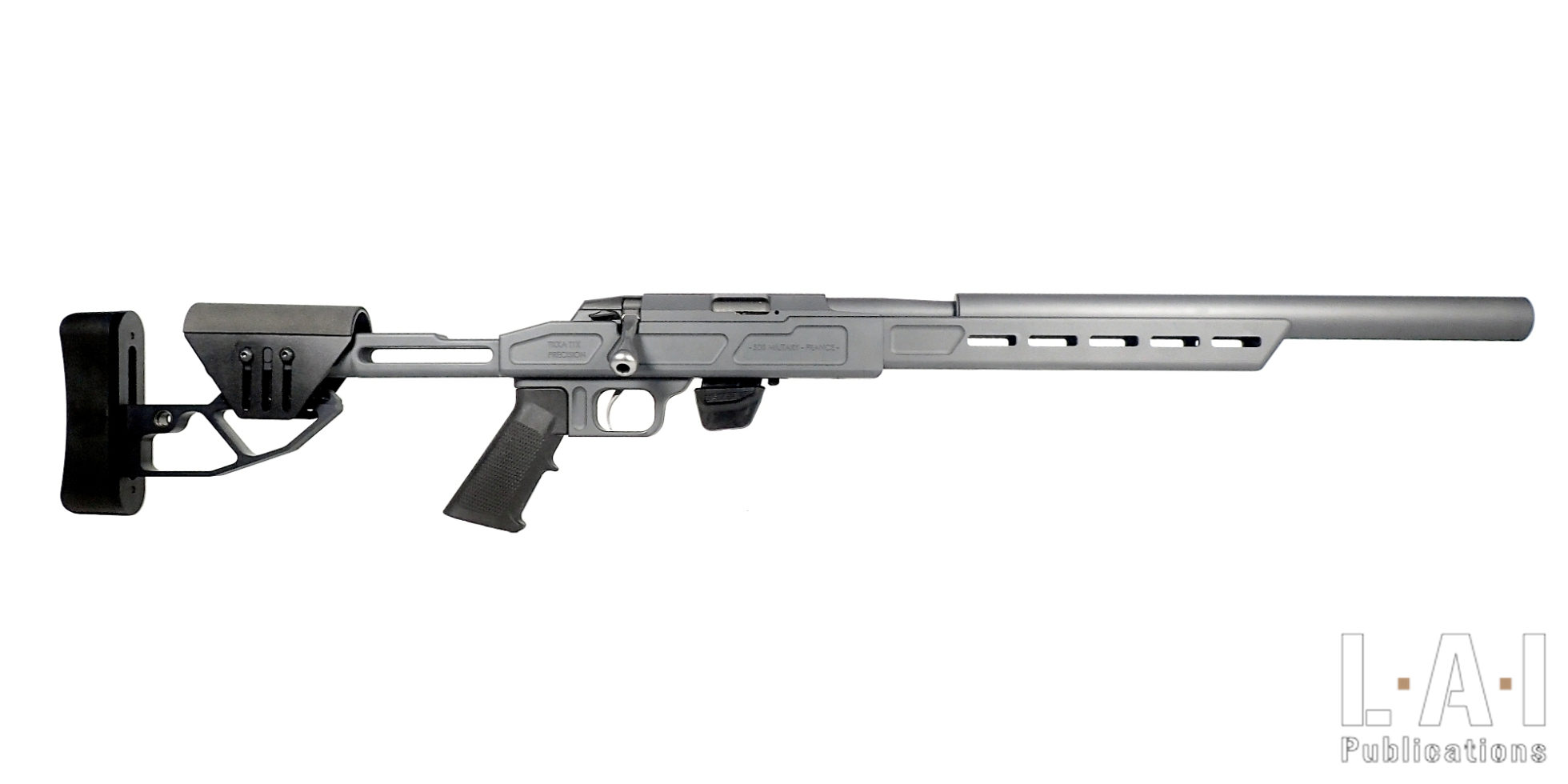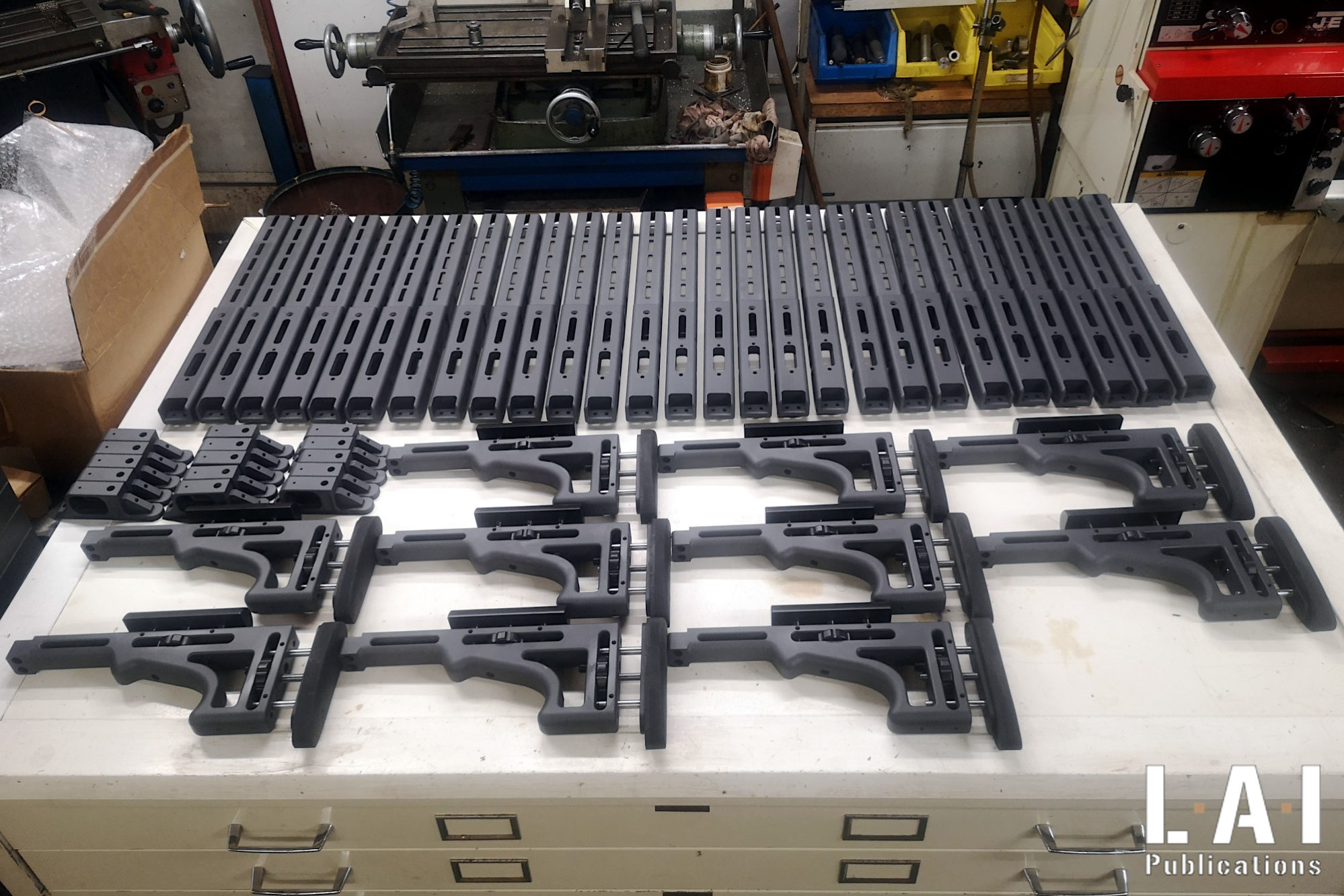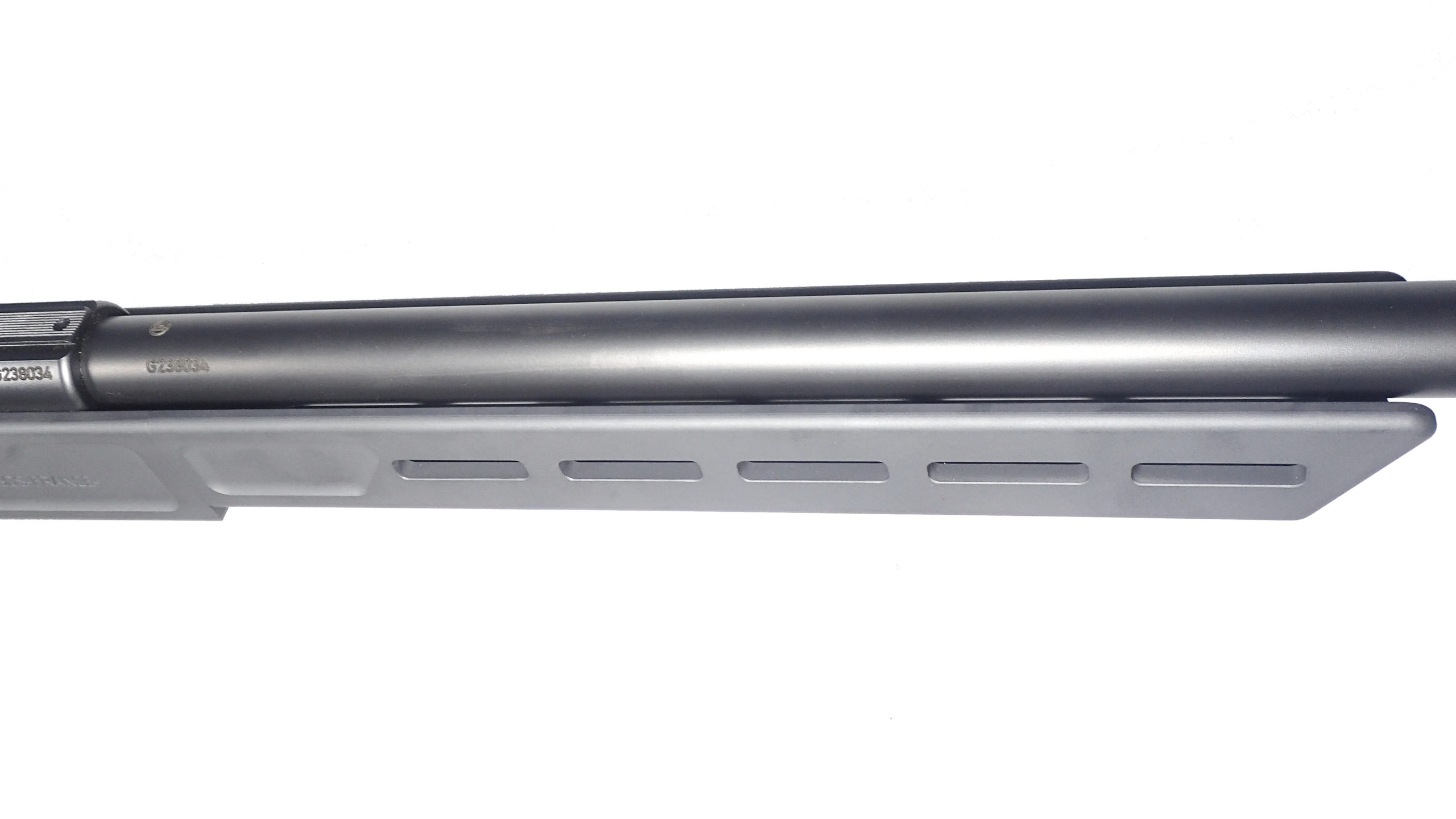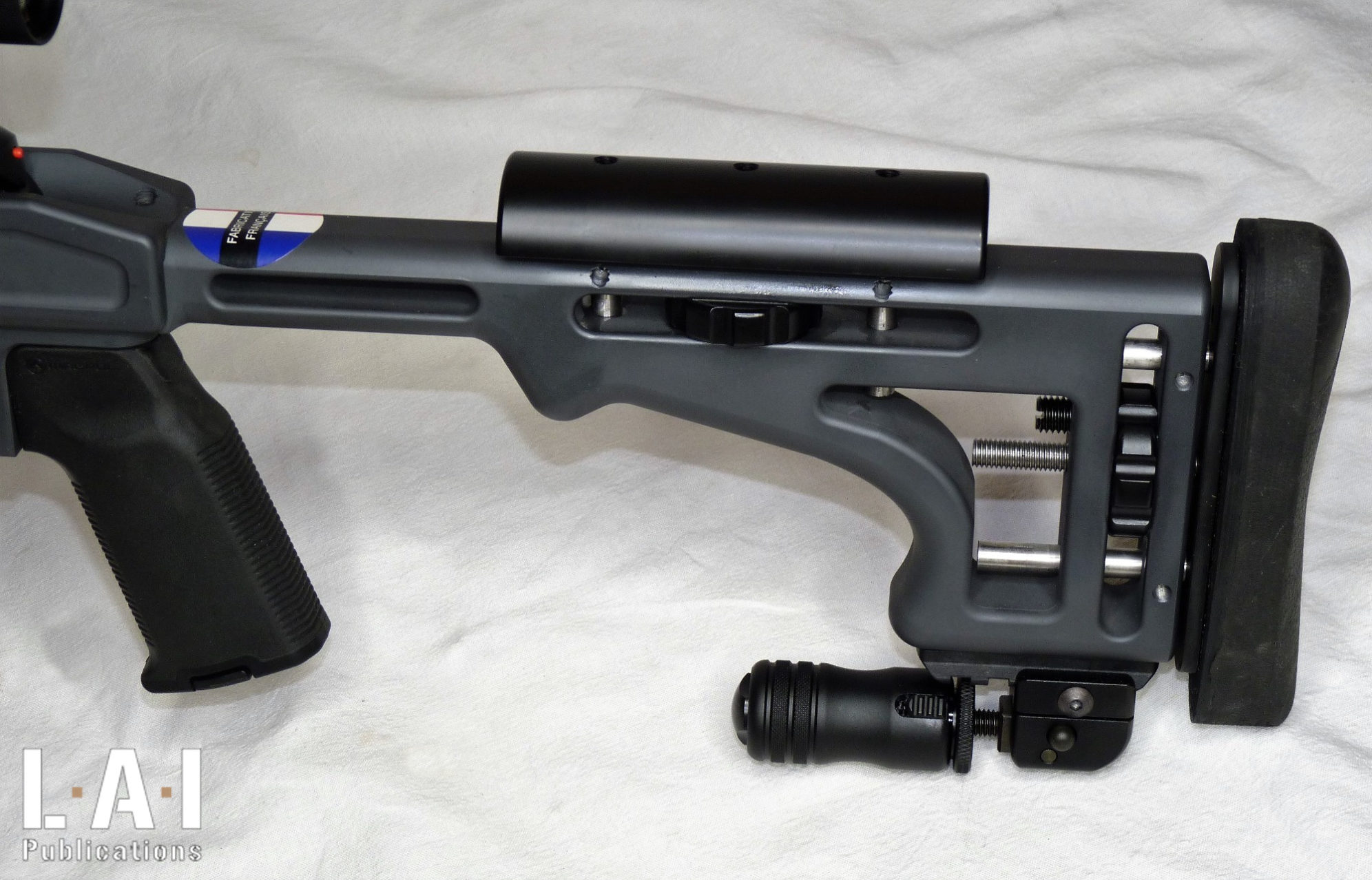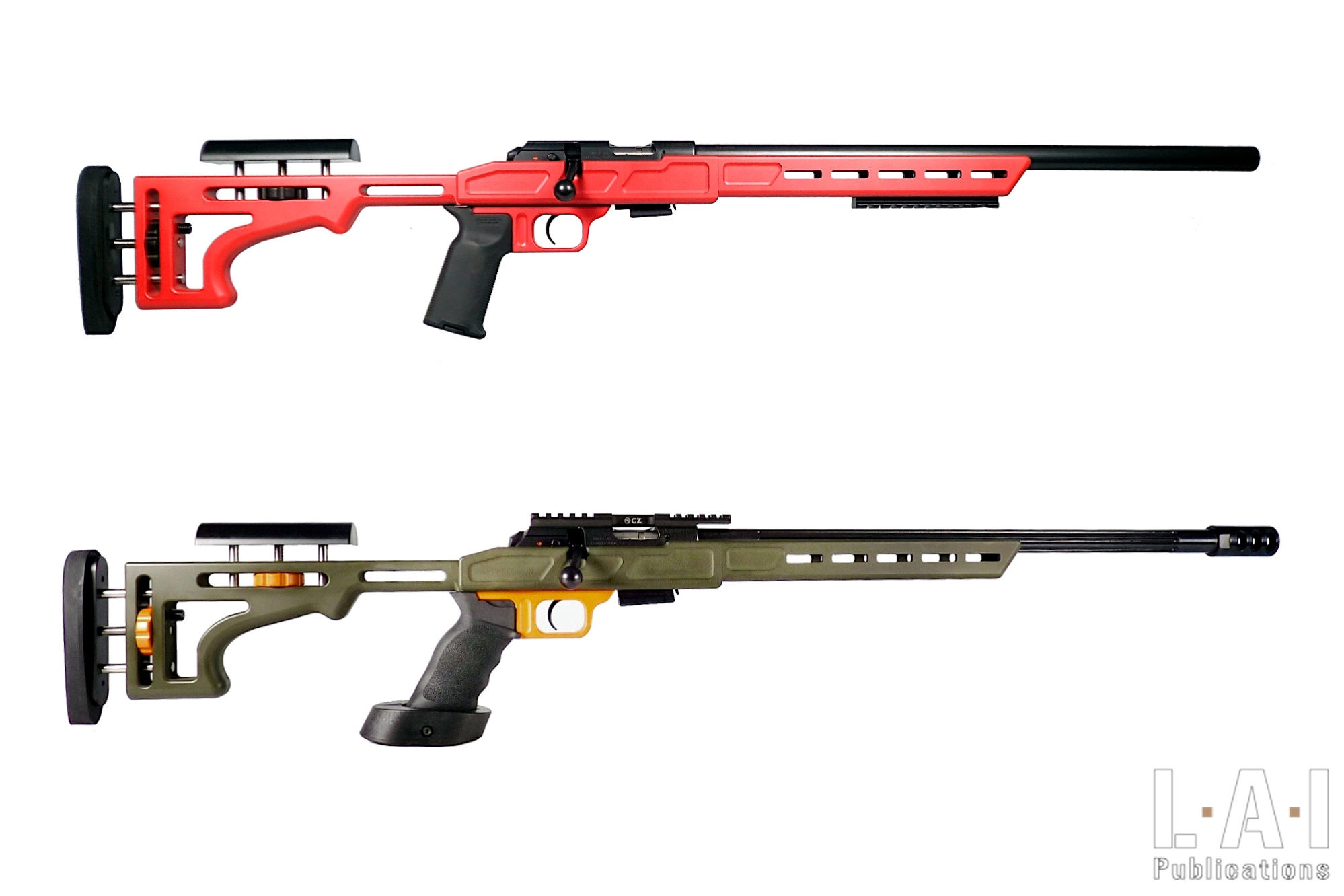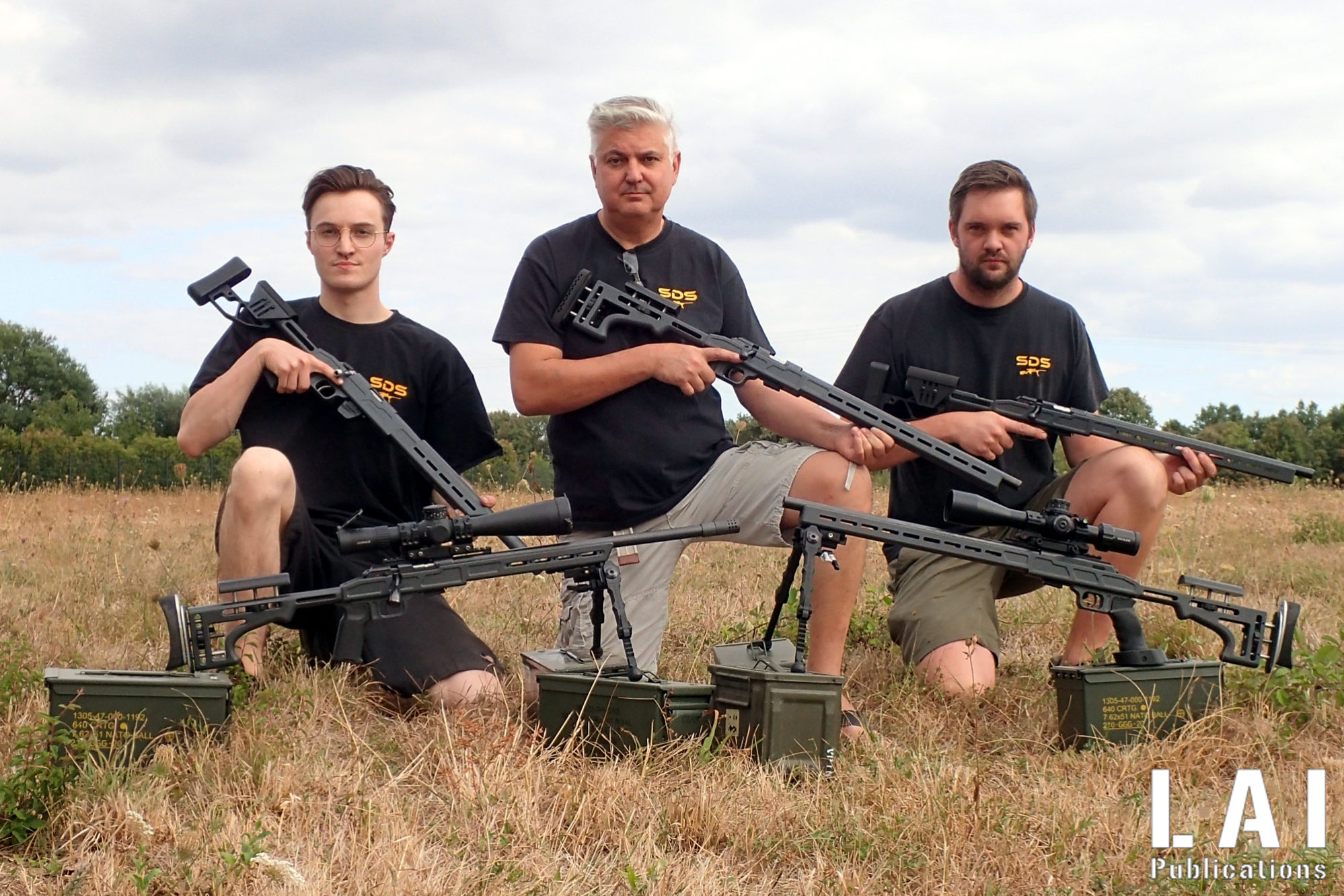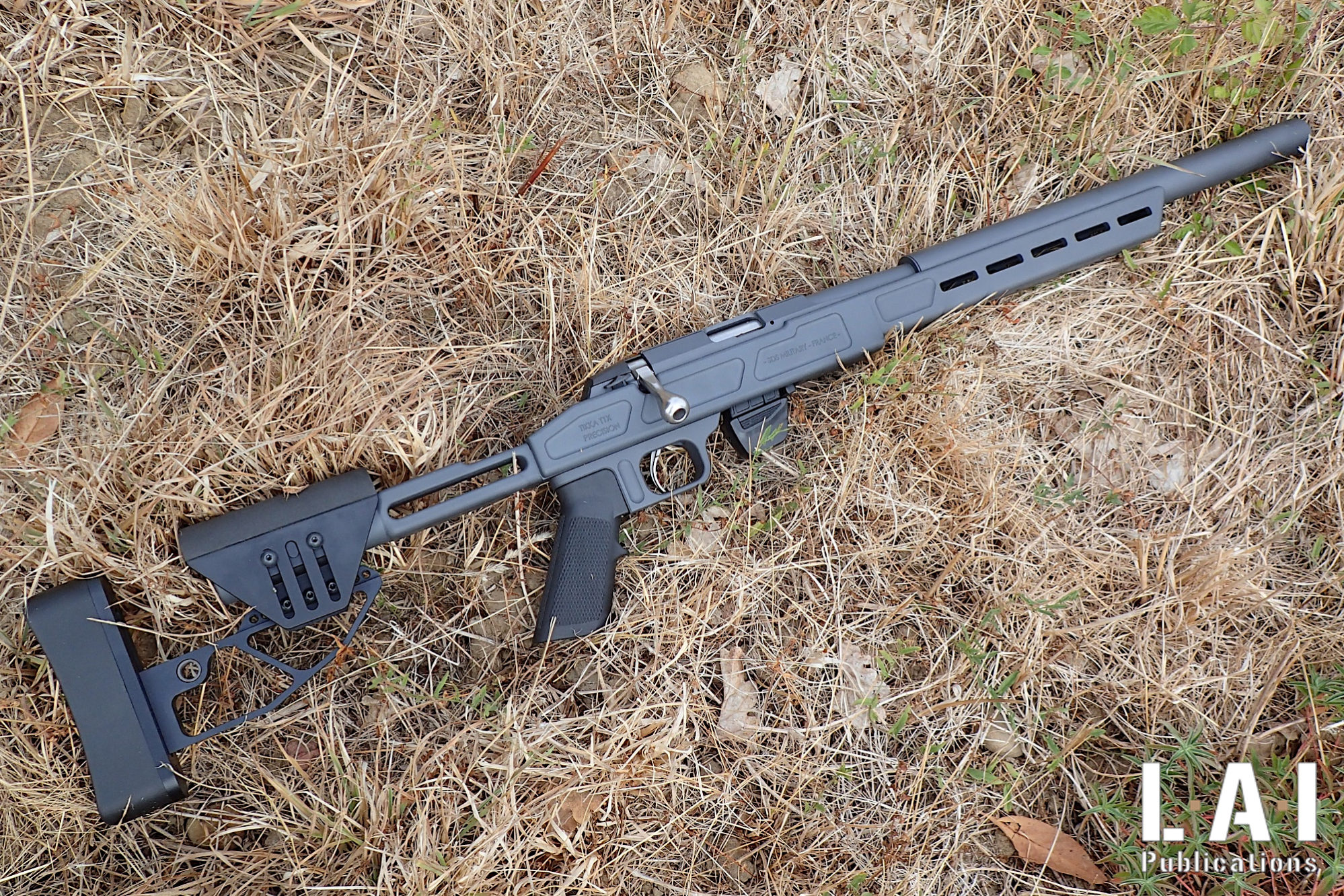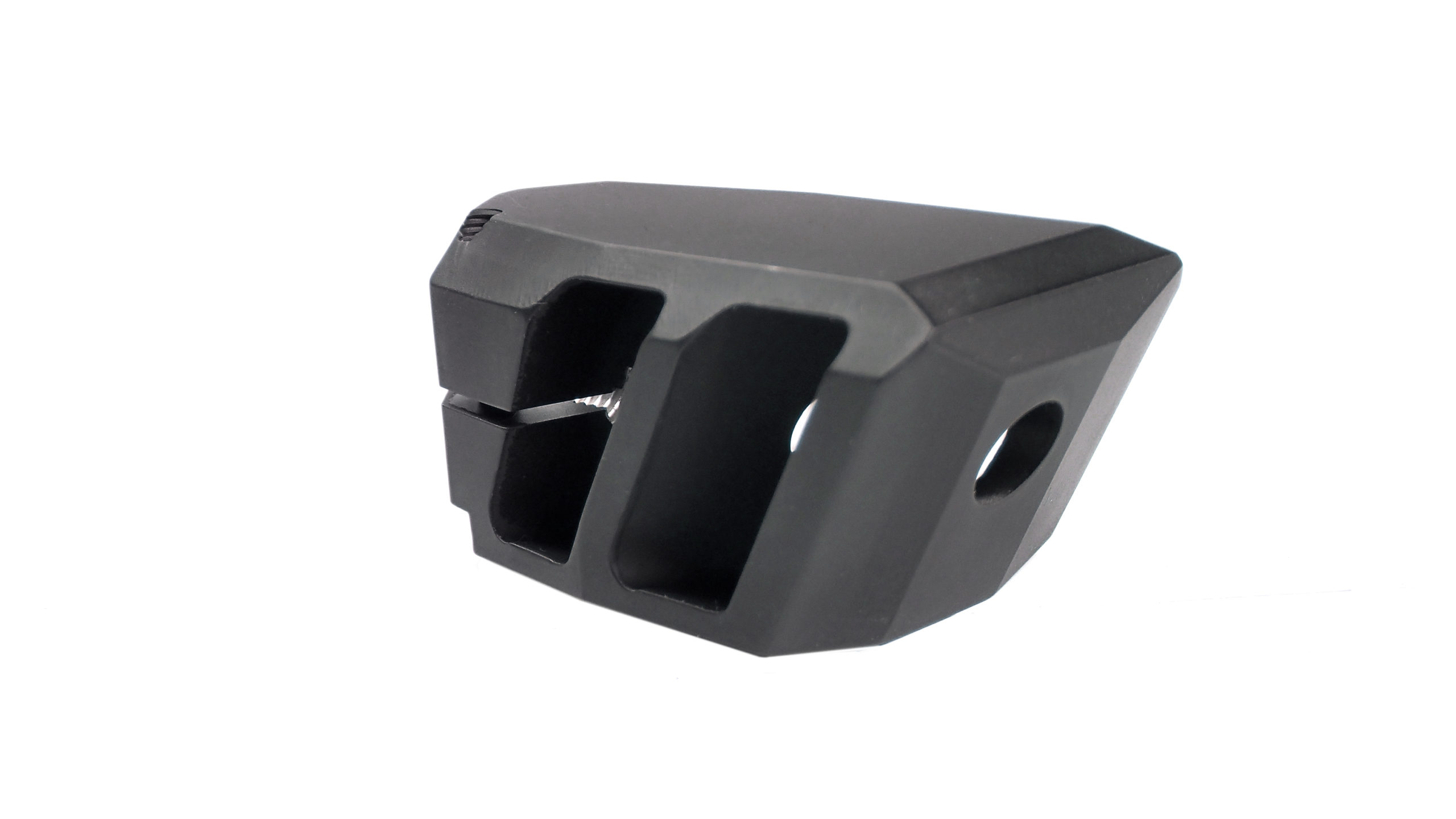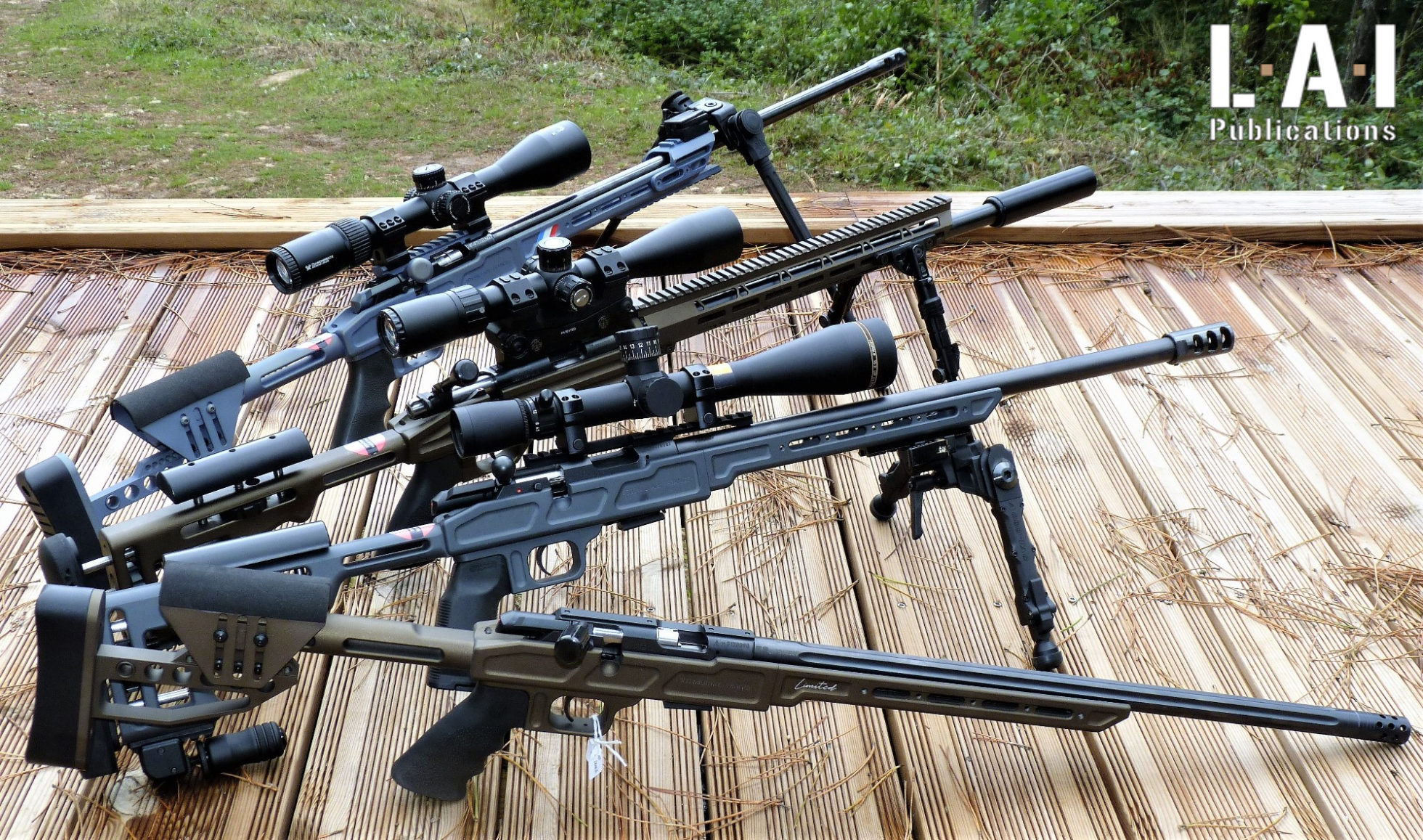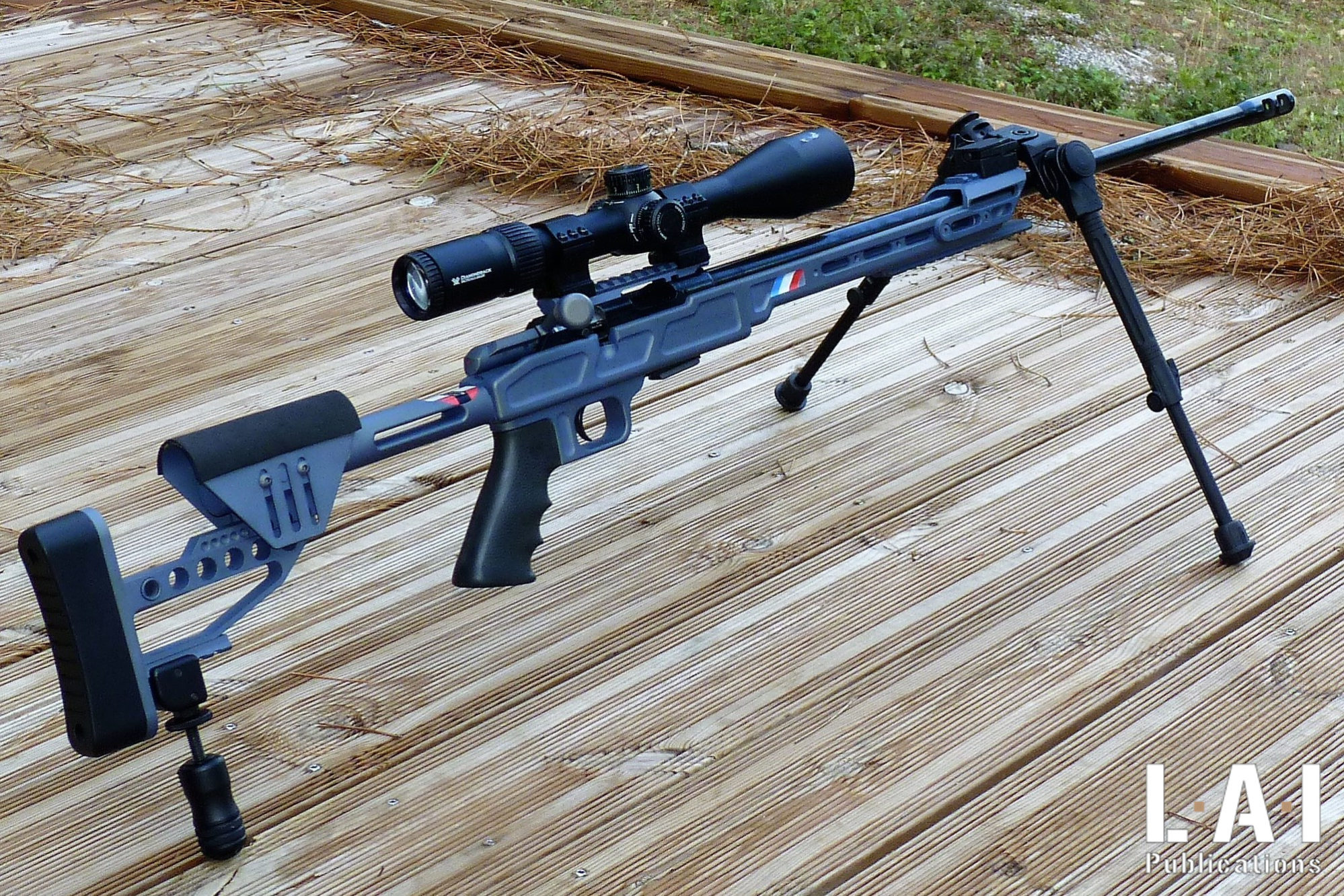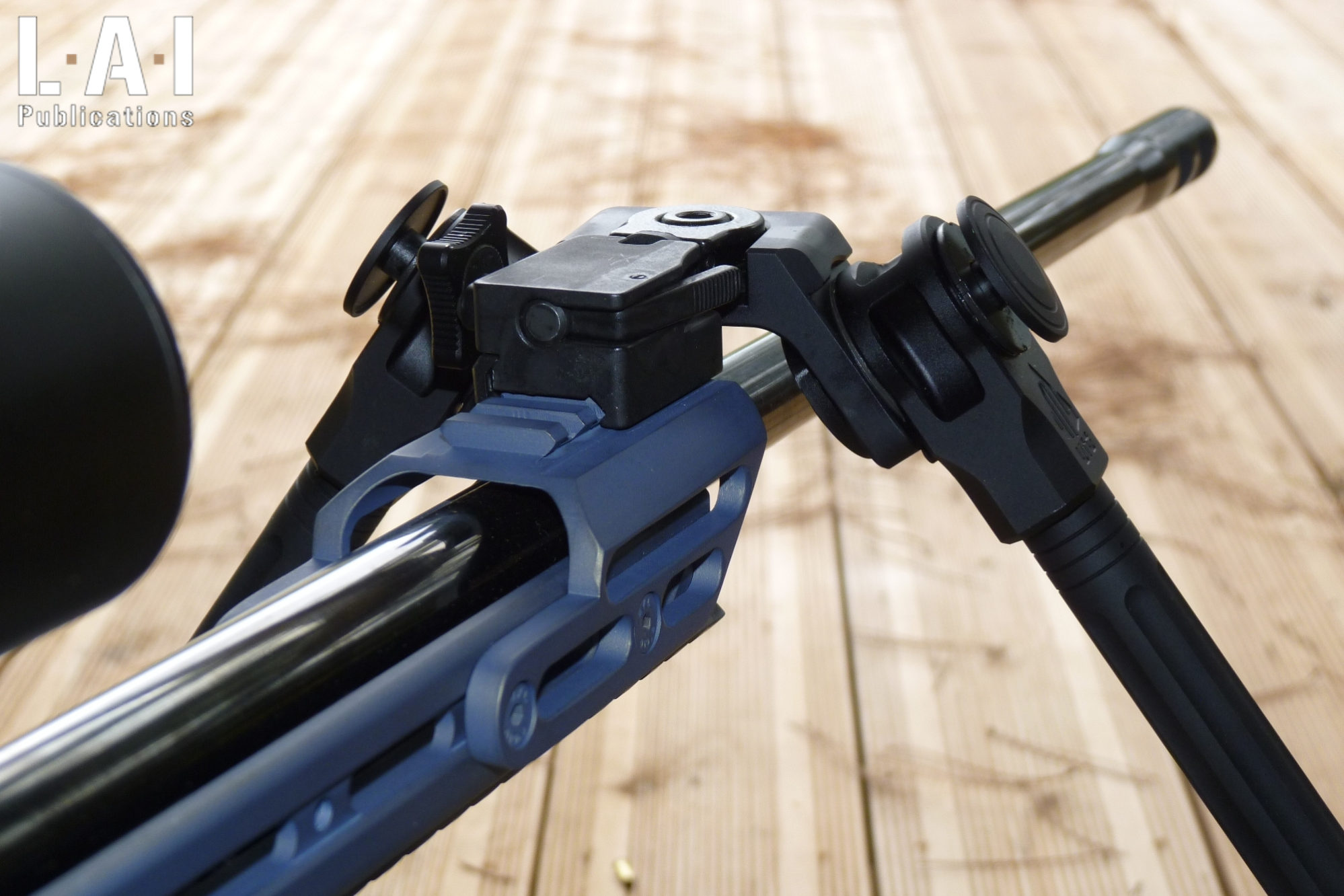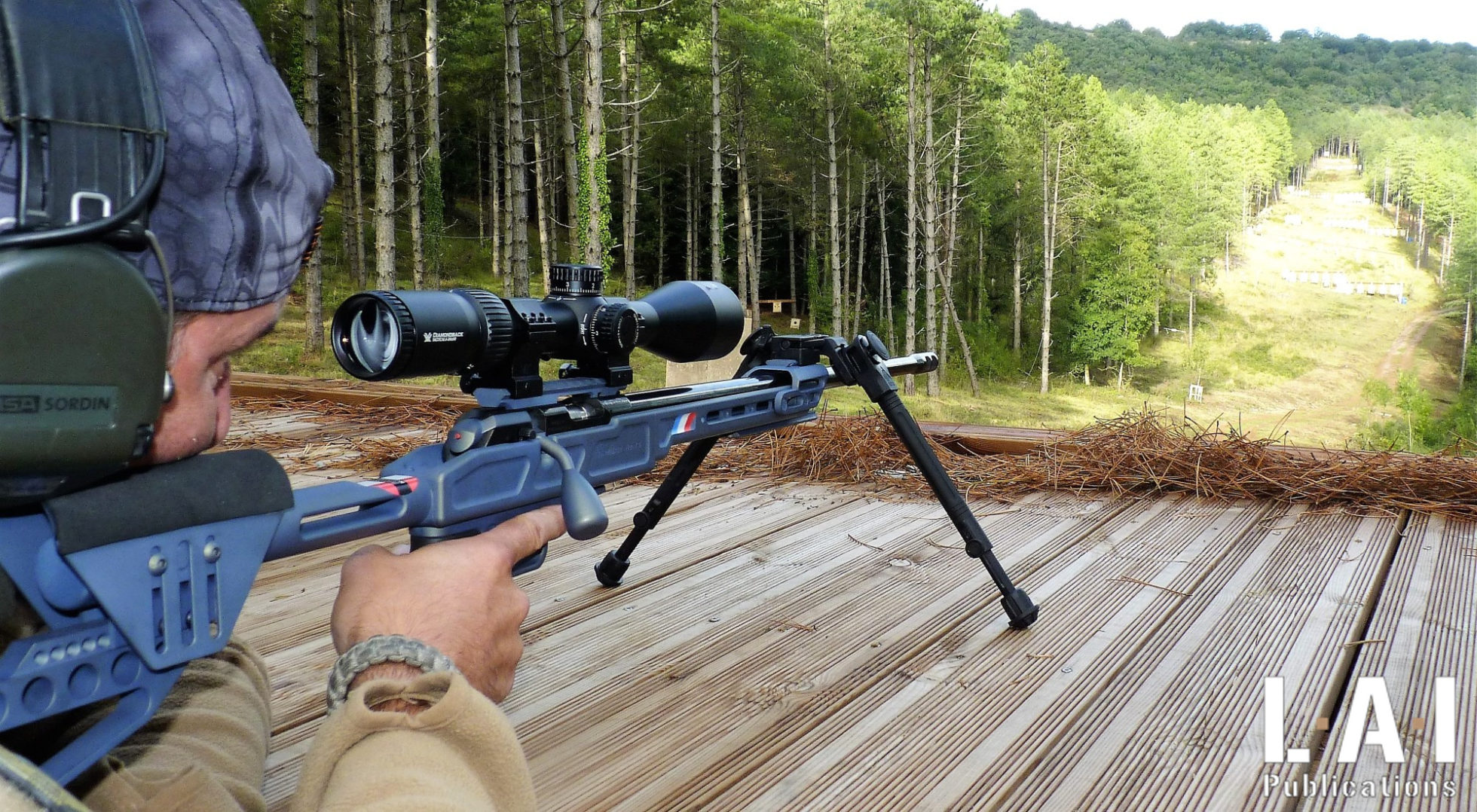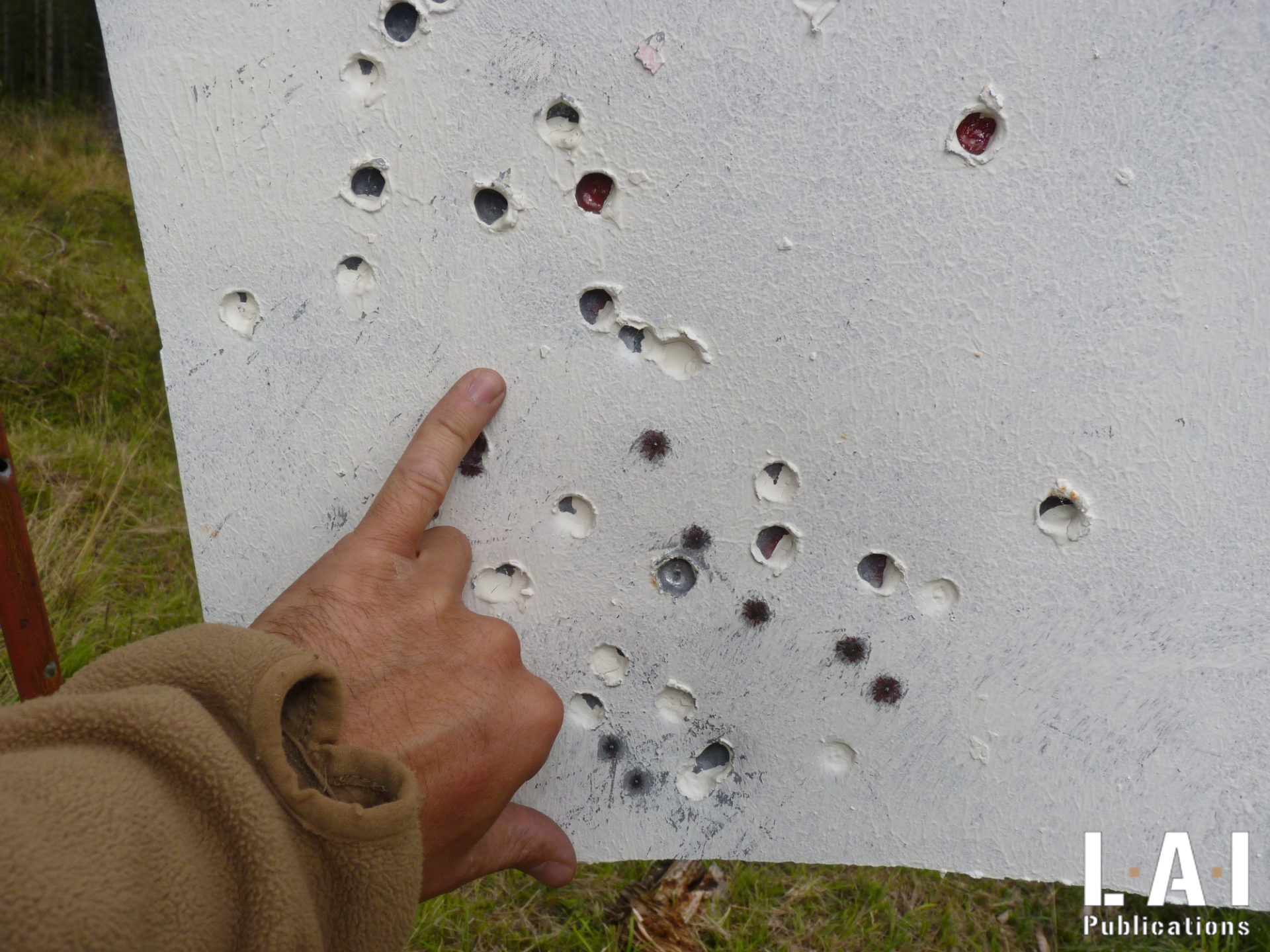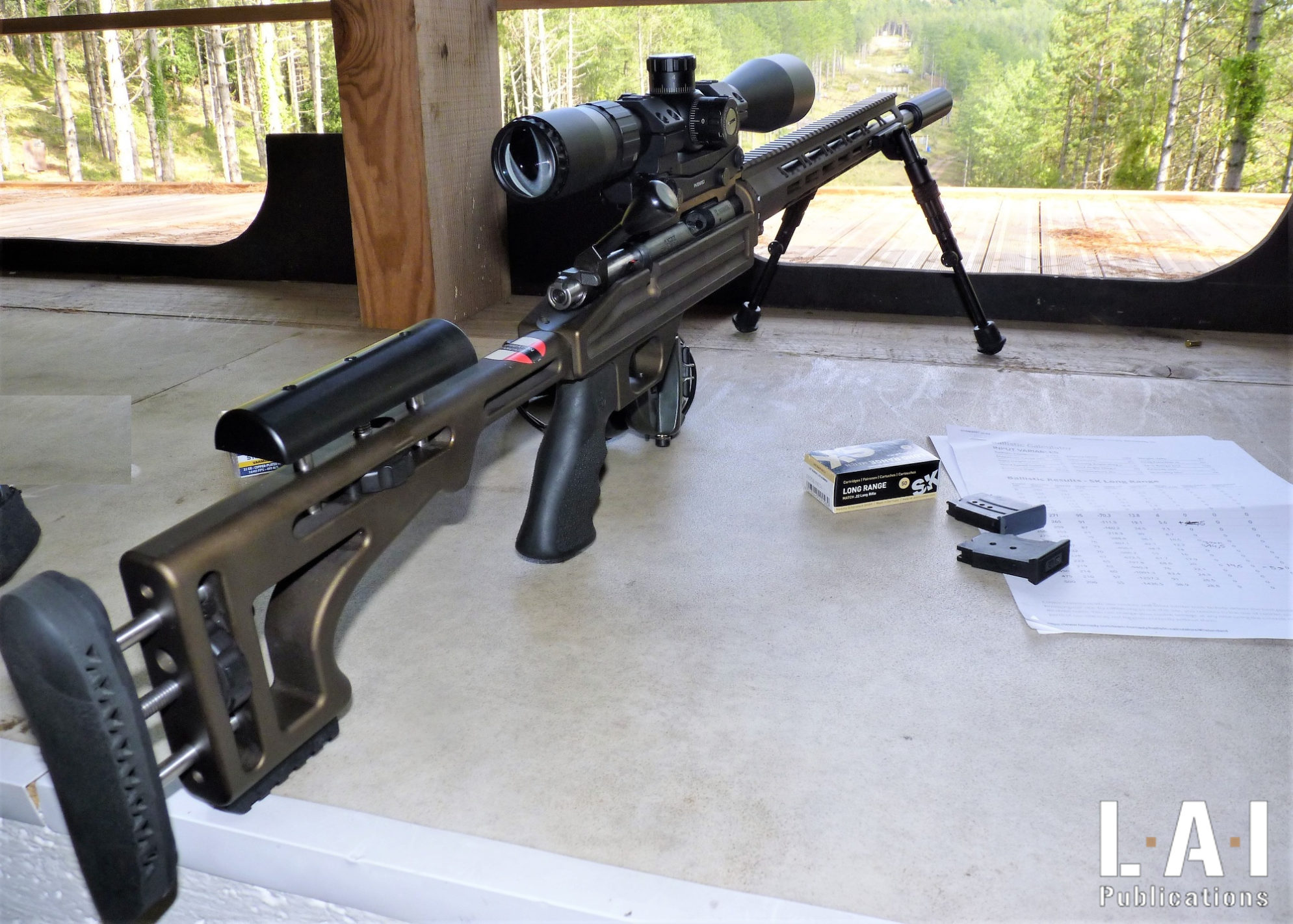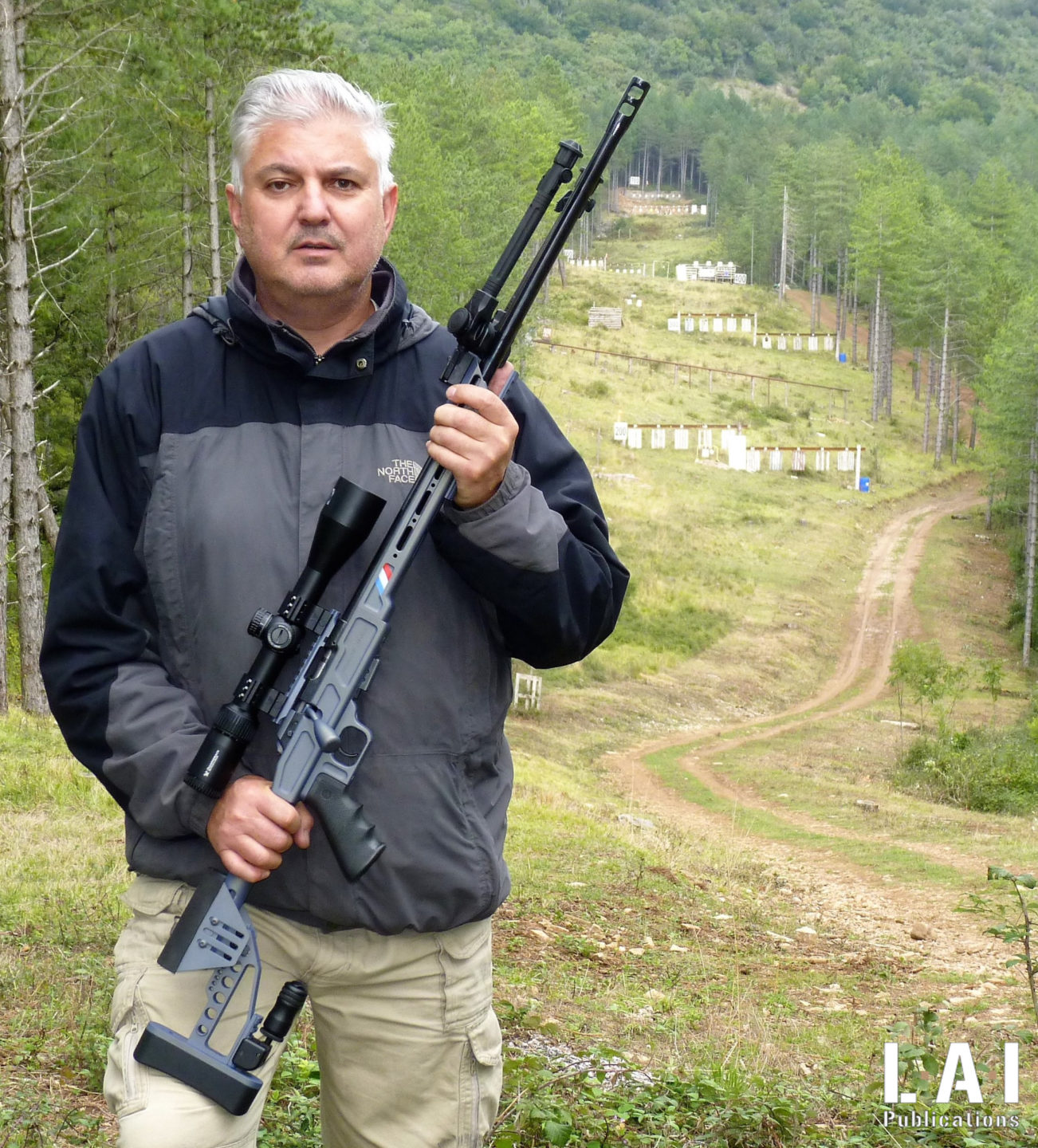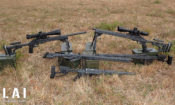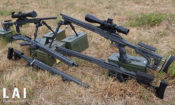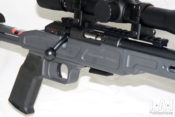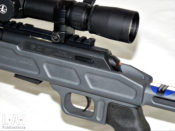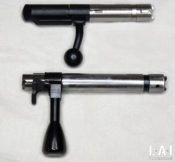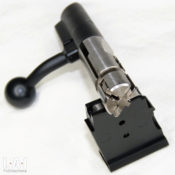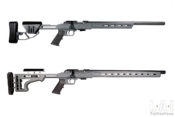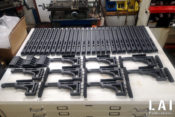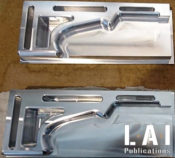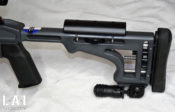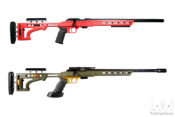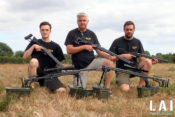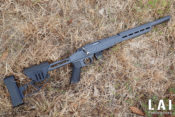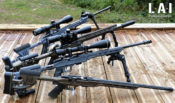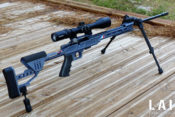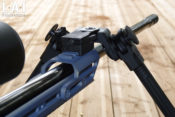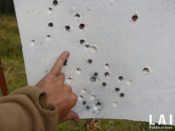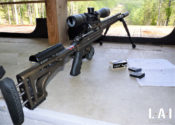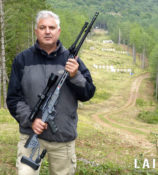CZ 457 and SDS Precision chassis: a tandem for long-distance shooting in .22LR

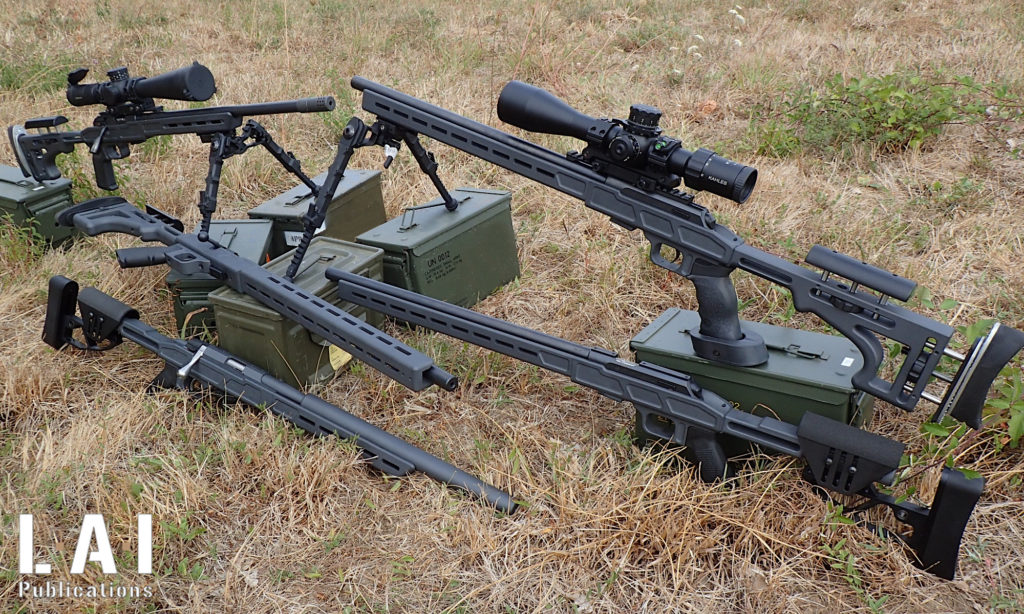
For nearly a decade, we have been following the development of this range of chassis for .22 LR rifles dedicated to precision shooting: from the first “top-off-the-hat” ideas to production plans. We have had many copies in our hands and been able to test almost all the variants.
A response to an unexpressed need…
The SDS workshop was created by Jean Paul Sape who is also co-founder of the LAI Publication website where you are reading this article. This establishment offers in addition to its traditional gunsmithing activities and its special manufactures for both civilian and professional users, customization or restoration services on modern or antique weapons. Its ranges of .22LR chassis are today part of the references in this domain in France. The market has evolved in recent years: if we go back to the early 2010s, very few or close to none .22LR chassis were available on the market. This is no longer the case today. Most of major manufacturers have developed or adapted stocks, boosting the market. The advantages of the SDS chassis lie in a careful elaboration, perfectly adapted to the weapon and above all modular since the first model put on the market.
The chassis design was carried out in CAD (Computer-Aided Design). The prototypes and series productions are machined by a subcontractor of the Toulouse aircraft industry (T.N: in Europe, Toulouse (France) is one of the highest places about aerospace industry and engineering). This service provider is accustomed to the constraints and requirements of this cutting-edge industrial sector, guaranteeing a high-quality product. The elements come from aviation aluminum blocks and are machined on CNC machines (“Computer Numerical Control“). This manufacturing process ensures a flawless product and total interchangeability of all parts. We are therefore on a “Made in France” production, a not so obvious thing nowadays because of the requirements of shooters in terms of final price, often difficult to match with the quantities produced, incomparable with those of the major brands and with the market in North America…
It was during a competition in “.22 LR Extreme Long Range” or “.22 ELR” (understand here, shooting with .22LR ammunition up to 500 m) organized in South-Western France that we “rediscovered” the new range of SDS solutions around the mechanics of the CZ 457. With targets set from 200 to 500 m, this is a real performance for the small .22 LR cartridge. In addition to the qualities of the shooting and spotter duos, this competition highlighted the predominance of CZ productions: 63% of the weapons were rifles of the Czech brand (452, 455 or 457), the ratio being 80% out of the 10 finalists! Good seed makes good crops. The success of such Long-Range Shooting (LRS) competitions in .22 LR is something very positive: shooting this cartridge at long range requires real shooting, ballistics and wind reading skills. The results are very impressive. As an anecdote, I remember here the discussion with a “sports shooter” who assured me a few years ago that the .22 LR had no interest beyond the “50 m pistol” competition! If rifles equipped with “classic” stocks are used in these events with good results, it is clear that the chassis are overrepresented. Note that during the 2021 “Prince of .22 LR” organized by the “Coriolis System” shooting range in the Landes region in France, a CZ 455 rifle mounted on an old generation SDS chassis obtained the 3rd place on the podium. Similarly, at the .22 ELR competition organized by the Montagnol shooting range in 2022, these chassis won both second and third place with SDS shooters…
CZ 457 mechanics
Recently put on the market, the CZ 457 has brought real advances in the range. The receiver of the CZ 457 is thinner and more aesthetic than that of the CZ 455: it is no longer cylindrical and has flat faces on the sides. One of the main modifications is the introduction of a bolt stop positioned on the left rear of the receiver. It is therefore no longer necessary to pull the trigger to take down the bolt! However, there is only a small detail we would like to discuss concerning this receiver: CZ has chosen to keep an 11 mm rail while we feel a Picatinny rail would have been more appropriate. This “blocking” point for some scope mount is solved by the optional installation of a Picatinny rail (available, of course, at the SDS workshop). To be the devil’s advocate and go here against our better selves, it should be noted, however, that the vocation of the CZ 457 rifle does not lie only in this type of shooting: the .22 LR remains a recreational shooting rifle in the first place, where the 11 mm rail takes on its full meaning for a good part of the scopes dedicated to this use.
The trigger has also been revised and corrected: once non-adjustable, direct and sometimes heavy, the new version allows stroke settings from 0.5 to 5 mm and the releasing weight from 900 to 1500 g. A safety lever is now positioned at the right rear of the receiver: within reach of the index finger. It no longer locks the bolt in closed position when switched on. CZ thus breaks with the traditional 2-position lever, heavily inspired by the Mauser system, which was mounted on the rear part of the bolt.
The barrel is cold hammered and has 6 right-handed grooves at a 420 mm twist rate. With a “heavy” profile on the weapons offered by SDS, it has a very respectable diameter of 22 mm for a length of 525 mm. A barrel with integrated silencer, issued from the modification of the same barrel and keeping its appearance and dimensions is being studied by SDS and should see the light of day at the end of 2022. The barrel is removable as on the CZ 455 model. It is inserted into the receiver and then locked by two screws acting diagonally for a perfect set up. Depending on the arrivals, the muzzle can be threaded (at the classic 1/2″ 20 TPI) to receive a sound moderator or a muzzle brake “as useless as it is essential” … the latter potentially acting as a barrel “tuner” and not as a muzzle brake in this caliber if you mind our saying so! Note that it is possible, when the weapon is not threaded as standard, to have this modification carried out at the SDS workshop.
The bolt has also been redesigned: shorter than the old one, it unlocks and is cocked with a movement of 60 ° against 90 ° on previous ranges. In addition to a gain in speed of action, the shorter rotation makes it possible to install the optics as close as possible to the receiver in particular for larger eyepieces. The striker has also been lightened by 60% thus limiting percussion disturbances detrimental to accuracy, the action is also faster. A cocking indicator protrudes from the bolt rear end: visible and tactile, it is perfectly thought out. Two extractors are arranged on either side of the bolt, the ejector remaining carried by the receiver.
The magazines used are the “classic” of the brand, compatible with the CZ 455 and 452. In synthetic material, they are still very solid. A wedge at the back of the magazine’s well frees up space to accommodate magazines adapted to the .22 Magnum or .17 HMR, a possibility offered by the change of barrel.
SDS Precision chassis
Available for CZ 457, but also Tikka T1X and Sako Quad, the SDS Precision chassis are built around 3 elements: the stock, the central part and the handguard. The combination of these 3 elements makes it possible both to design a chassis close to the shooter’s desiderata, but also guarantees them scalability and compatibility between all the elements existing on any model of SDS chassis. Each of these elements is therefore always machined from a block of aviation 7075 aluminum alloy. The production is carried out with the same seriousness as the aeronautical productions and with its material and quality controls. The pistol grip is fixed on the trigger guard block, the whole being fixed by 2 hex-screws on the central part. The pistol grip is to the AR-15 standard, so the choice is extremely wide as a replacement option to adapt to everyone’s needs. Note here that some types of pistol grips will have to require a slight adjustment, the chassis does not take the rear rounded part of an AR-15 lower.
With an aesthetic more focused on a “tactical look” than the chassis previously designed for the CZ 455, this one perfectly accommodates the receiver thanks to its precise design. Lateral lighting cuts accentuates its original aesthetic. The chassis attachment uses the same slots as the original screws: thus, the weapon receiver does not require any modification. It can therefore be put back in initial configuration on a standard stock. Note here that the screws that maintain the mechanics are torque tightening and those that ensure the assembly of the different modules of the chassis are glued to customer’s request to ensure a perfect resistance over time. The disassembling of the latter is not necessary for the maintenance of the weapon.
The handguard is made with a wide passage for the barrel. This one is obviously floating avoiding any disturbance of the barrel harmonic. As production fits the current trends, the M5 threads on its sides and base, which allow the installation of additional Picatinny-type rails, give way on the latest production to M-LOK interfaces. An ARCA (prismatic interface) adapter can also be mounted under the handguard to adapt to new shooting techniques. It is now available in “standard” and “XL” versions, a longer version that allows the installation of the bipod on a very forward position.
Two stocks are available: the AMC and the LPDC.
The AMC stock uses a cylindrical interface (the diameter of which is that of an AR-15 receiver extension) that attaches to the central part. This interface allows the installation of a “bought on the shelf” stock module. The stock module selected by SDS is both economical and efficient. Sometimes called “airsoft grade” on some social networks, it is mounted on many other productions such as, for example, the “VUDOO XLR Element” chassis manufactured in the United-States, and which displays a selling price of more than $ 2500! This makes you reconsider about SDS chassis prices…
The LPDC stock is fully machined in a very large block of 7075 aluminum alloy by the subcontractor already machining all the parts of the chassis. This is the result of a long reflection conducted in partnership with demanding shooters. If it takes some characteristics of already known stock, it was designed and realized with the perspective of the competition and the .22 ELR in mind. Its cheek rest and length are both precisely adjustable via dial. As an option, a short Picatinny rail can be added on the lower part of the stock for the installation of a monopod. In short, a real ergonomics ensuring an ideal placement of the off-hand or a sandbag. All the parts composing this stock are machined in the mass in order to place this chassis in the high-end of the chassis marketed. The set of all these pieces make it a stock of an unusual mass that “sits” the whole weapon in the hollow of the shoulder with impressive stability.
SDS Precision chassis receive a Cerakote™ treatment in “Sniper Grey” color as standard. However, it is possible to obtain a personalized finish when you order your copy! Here too, everything is possible for the happiness of both the shooters and the gunsmith! The Cerakote™ treatment is now well-known: it is probably part of the best at the moment. This finish has the advantage of being extremely resistant to abrasion and shocks while bringing a real aesthetic plus with its wide range of colors.
The variation of these modules gives 4 basic versions of the SDS Precision chassis:
- Chassis with LPDC stock and XL handguard
- Chassis with LPDC stock and standard handguard
- Chassis with AMC stock and XL handguard
- Chassis with AMC stock and standard handguard
If you add to this the possibilities of customization (barrels, pistol grips, rails, optics …), you have enough here to build the weapon of your dreams and to make it evolve with your practical shooting or your needs!
Depending on the model, the rifle will measure approximately 970 mm depending on the stock options and settings and weighs nearly 3.9 kg excluding optics and accessories.
Among the customizations proposed by the SDS workshop for the CZ 457, let’s highlight the possibility of replacing the traditional bolt handles by studied models facilitating gripping and action. These levers are made of steel with bluingSurface finishing of steel giving a black (sometimes bluish)... More finishes. Their mass, and therefore their inertia in the movement, facilitates the rapid handling of the bolt.
Our tests
We took advantage of a LRS course at the “TLD700” shooting range in Montagnol (in France, offering shooting possibilities from 200 to 700 m) to book for a whole afternoon to reproduce the qualification phases of the “Prince of .22 LR”, namely shots between 200 and 320 m on metal targets of 30 cm sides. The results easily impressed us, and it would not required much more to get into qualifying for a .22 ELR!
The SDS workshop has provided us with 4 variants of these productions of the moment, to allow us to get an idea of the evolution and possibilities of the range. One of these weapons was prepared and modified by Florentin, manager of the SDS workshop. The shots were mainly carried out from ACC-TAC or a modified UTG bipods, with or without sound moderator (SAK) and with a Leupold VX-31 LRP 6.5-20×50 scope. This high-quality scope has milliradian (mrad) settings and markers, a wide field of view and very high sharpness.
Throughout the range, the various shooters present on this shooting course quickly found their marks. The settings are intuitive and accurate, with weapons of nearly 4.6 kg in firing order, the stability of the set is excellent in the practiced exercise. The action of the CZ 457 does not suffer from any criticism: flexible, reliable, with a strongly marked release and excellent quality.
Different munitions were selected, in part by observing those used in .22 ELR.
- SK Long Range 40 grains: V0 measured at about 340m/s.
- CCI Blazer 40 grains: V0 measured at about 350m/s, less regular than SK Long Range.
- CCI Stinger 32 grains: V0 measured at about 500m/s, regular but less suitable for long distance.
- RWS Target Match 40 grains: V0 measured at about 330 m/s, a reference in the field.
In the first place before embarking on the “long range” in .22 LR, it is necessary to write a ballistic chart, potentially with the help of some ballistic calculators. This is necessary in order to ensure that the scope on the weapon will be compatible with its corrections in amplitude of adjustment or at least that the reticle will allow – if necessary – to compensate further the bullet drop. For information, on the SK Long Range, the corrections are from 6 mrad to 200 m, 14.5 mrad to 320 m and 20 mrad to 400 m… or 8 meters at this distance! Of course, it is also possible to consider here the use of a 10 or 20 MOA scope mount or any other device to take this problem into account.
At 200 m, the gongs are invariably “chimed”, with a very audible (and playful) perception of the impact…but the game is quickly boring, and the distances lengthen. Up to 320 m (350 yards, the last qualifying distance in “Prince of .22 LR”), an average shooter ensures almost an impact with each shot in the target, with a flight time long enough to wait for the impact’s sound return… Our best grouping at this distance with the SK Long Range is 15 x 15 cm, or about 1.5 MOA. This is promising, knowing that we had never practiced at these distances and that we had a tailwind coming now and then to disrupt the shots. We will note during this shooting assignment that the use of a sound moderator does not significantly degrade the groupings at 300 m and more! It is still necessary to clean it as soon as the impacts deviate too much: its mass varies with fouling, which significantly modifies the barrel’s harmonic.
Our last shots of the day were increased to 400 m, a distance where the presence of a spotter is a real necessity. This 400 m threshold makes it possible to measure the sporting performance of shooters in this discipline: everything becomes more complex to achieve. Nevertheless, some goals were recorded, after which our last ammunition was intended for stones present on the mound in order to visually be able to announce the impacts.
It’s no surprise that we expect high performance from this new range of SDS Precision chassis: the opportunity to shoot far or even very far for this caliber has reinforced our appreciation. Aimed at a wide audience, leisure but also accomplished sportsmen and competitors, the new SDS Precision chassis keeps all its promises. In addition to its qualities, the versatility and the choice of available configurations allow shooters to design the weapon most in line with their expectations and practices.
Finally, let’s add that the LRS in .22 LR is really addictive and formative: to try it is to adopt it!
SDS scalability solutions
As seen, the SDS team is committed to developing its products for the sake of scalability and compatibility with existing products. Thus, given the success of current production, the range of SDS chassis will soon be joined by versions adapted to CZ 452 and 455 mechanics, so that the owners of these weapons can “upgrade” them according to their desires.
We have personally experienced this desire of the team with our CZ 455, mounted on an older generation chassis with an AR-15 slim handguard. As we have had the pleasure to shoot with the LPDC stock firsthand, we were really impressed. Thus, during a visit to the SDS workshop, we asked to mount it on our own rifle. In addition to this LPDC stock, we took the opportunity to install a Match “Flyweight” trigger and apply a new coating: a Cerakote™ “Midnight Bronze“. An update that puts our weapon back in higher standards and clearly increases its capabilities. This adaptation was therefore carried out by the SDS workshop, the disassembling operations of the stock modules requiring an essential experience. Do not hesitate to ask them for advice, the team will be happy to inform / answer any of your questions.
Our personal experience highlights the interchangeability of parts for those who already own an SDS chassis and would like to upgrade it… Once again, nearly anything is possible.
In conclusion
As mentioned above, one of the weapons tested benefited from the prototyping of Florentin, pillar of the workshop and collaborator of Jean Paul Sape. Florentin has created an interface that grips on the handguard and allows the installation of a bipod UTG of the pendulum type. This quality bipod is in fact the only model available (at the time of writing) on the French market enabling this adaptation. We thus find an exemplary comfort for shooting, the rifle being “suspended” under the bipod. The travel amplitude and resistance are adjustable by a control on the bipod mounting block. At this stage it is a prototype, validated for use… It should soon be redesigned and modified with the aim of series production. This type of work allows us to hope for a bright future for this range of products in an armory always listening to shooters’ needs.
Julien Lucot
This is free access work: the only way to support us is to share this content and subscribe. In addition to a full access to our production, subscription is a wonderful way to support our approach, from enthusiasts to enthusiasts!
Thanks
Jean Paul Sape, Florentin and Adrien.
For the loan of the scope:
Thanks to Rémi, Vincent and Liliane, Philippe and the entire Montagnol TLD team for their warm welcome and their help.


